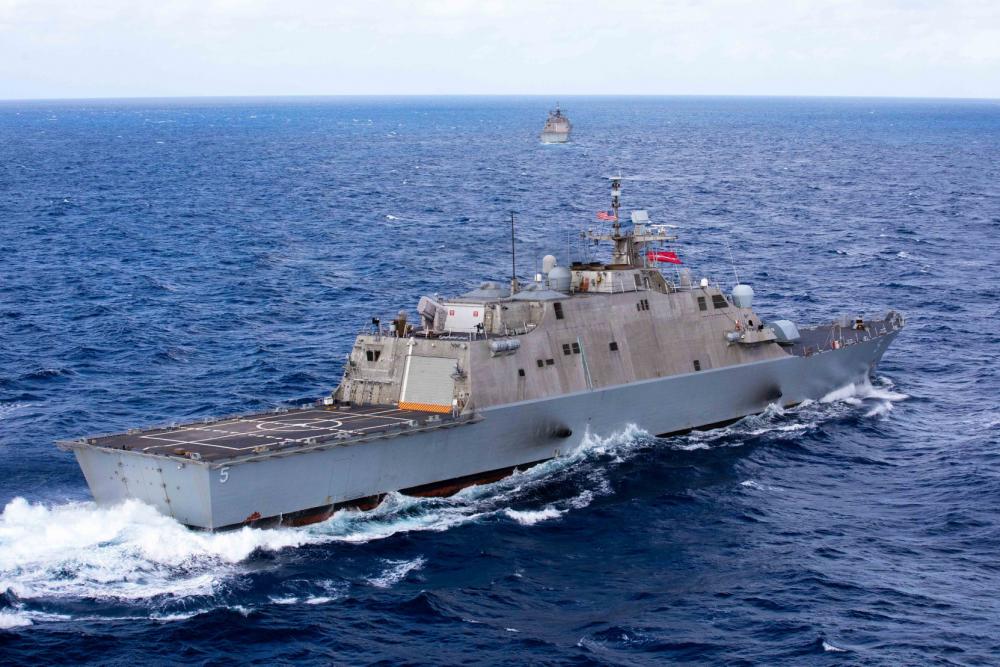Navy Times News Feed
Future sailors and veterans must either enlist or reassess into active duty and ship out before the end of September to qualify.
Future sailors and veterans who agree to re-up can combine the maximum enlistment bonus with a maximum student loan repayment — to cap out at $115,000 — provided they enlist or reassess into active duty and can ship out before the end of September. The Navy, which raised the maximum enlistment bonus to $50,000 in February, said the incentives aim to attract the “highest quality of recruits,” and come as all the services struggle to hit recruitment quotas this fiscal year. “The maximum current enlistment bonus is $50,000, and the maximum loan repayment is $65,000,” Rear Adm. Lex Walker, the head of Navy Recruiting Command, said in a news release. “They are not mutually exclusive, so if a Future Sailor maximizes both, that adds up to a life-altering $115,000, and the opportunity to serve in the world’s finest Navy.” Under the Enlisted Loan Repayment Program, the Navy covers student loans that were taken out prior to a sailor enlisting for active duty, such as the Stafford Student Loans. Navy establishes Recruiting Reserve Command as services struggle with quotas Future sailors must have the Loan Repayment Program listed as a guarantee in their current annex to DD Form 4 (Enlistment Guarantee/NAVCRUIT 1133/52) in order to maintain eligibility. Navy veterans, or veterans from other services, must have previously served at least 12 consecutive weeks on active duty to qualify for the bonuses. They are not eligible for these incentives if they previously received an enlistment bonus. While Navy veterans are required to complete in-processing at Recruit Training Command Great Lakes, veterans from other services must also complete a three-week Naval Orientation Course at RTC Great Lakes. Those who re-enter active duty will serve in pay grade E-4 or below, the Navy said. “If you are a Sailor, Marine, Airman, Soldier, Guardian or Coast-Guardsman who recently separated, this is an opportunity without precedent,” Walker said. “And if you have student loan debt, you could be eligible for the Loan Repayment Program if you ship in any month of any fiscal year while the program remains active.” The bonus announcement comes as all the services face obstacles with recruiting numbers this fiscal year. Military leaders have said more thorough medical screenings, fewer Americans eligible to serve, and low civilian unemployment have all made it more challenging to recruit new service members. Still, Chief of Naval Operations Adm. Mike Gilday told reporters July 26 that the Navy is currently on track to meet its goals, despite the recruiting challenges. “This isn’t the first time that we’ve faced these challenges,” Gilday said. “We just can’t rest on our laurels. We have to be more innovative. We have to be more creative. Our outreach has to improve.”
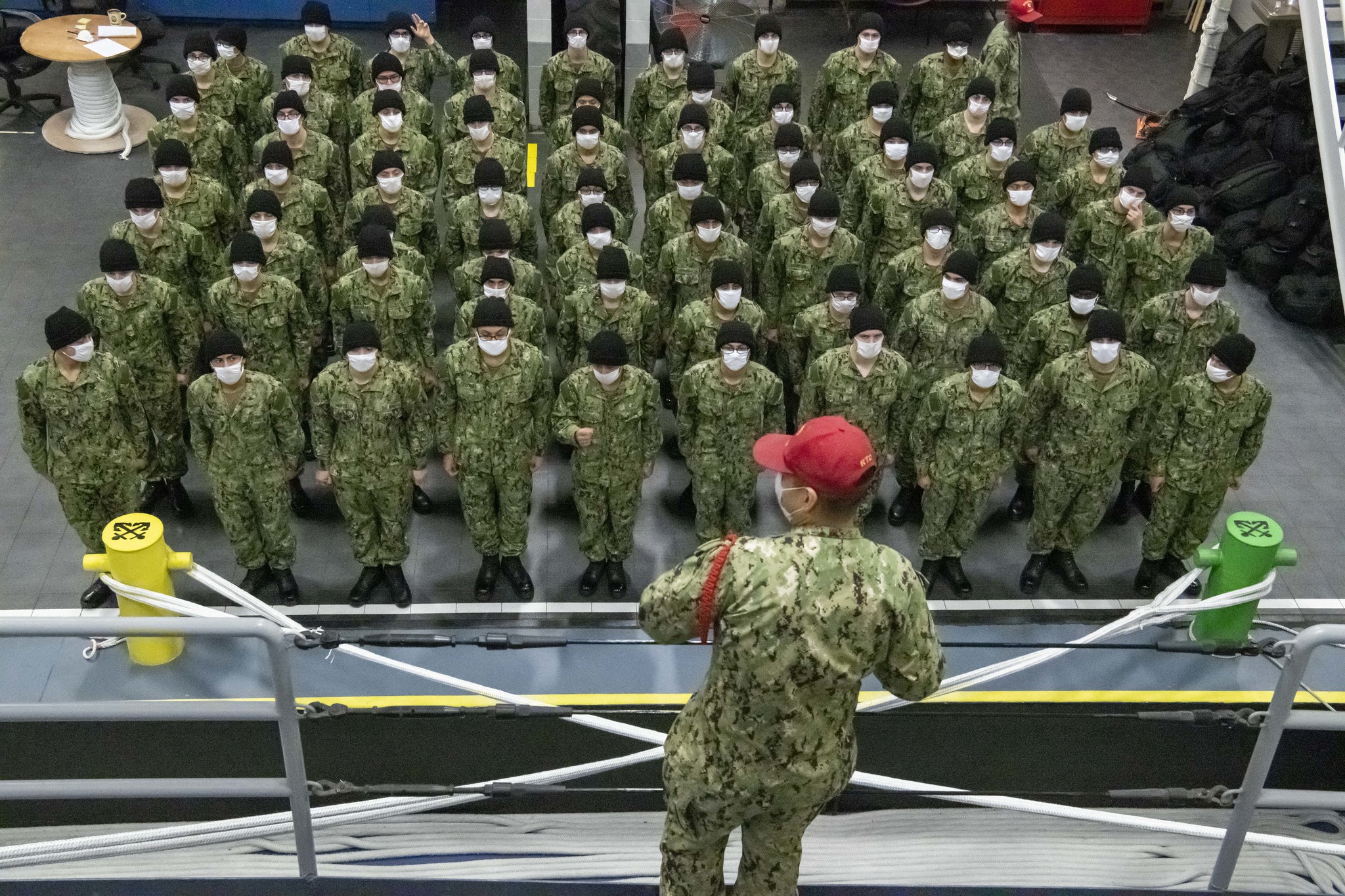
The video explains why the rifle is such an efficient, and ultimately dangerous, weapon.
A YouTuber this week posted a video of the inner mechanics behind the oft-polarizing AR-15 rifle. The video, in explaining exactly how the rifle works, shows why the weapon is an efficient, and ultimately dangerous, weapon. “I have always enjoyed animation and illustrating how things work,” designer and 3D animator Matt Rittman says in his bio. “I’m especially interested in firearms and anything mechanical. My aim for this channel is to provide easy to understand, how-it-works 3D animations.” Rittman’s AR-15 rendering is one of several videos on the mechanics of firearms. The AR-15 was first designed as a military rifle in the late 1950s. Its manufacturer, ArmaLite, began producing the firearm before selling manufacturing rights to Colt. For more than five decades, the AR-15 has been a favorite among enthusiasts. A common iteration of the rifle, the M-16, has long been used by service members. And according to NPR, it once even appeared in a Sears catalog. “The National Shooting Sports Foundation estimates there are roughly 5 million to 10 million AR-15 rifles owned in the United States, a small share of the roughly 300 million firearms owned by Americans,” CNBC reported. But the AR-15 has a dark history, too. The rifle has been involved in 11 mass shootings between 2012 and April 2022. Eighteen-year-old Salvador Ramos deployed an AR-15-style rifle in the killing of 19 students and two teachers at Robb Elementary in Uvalde, Texas.
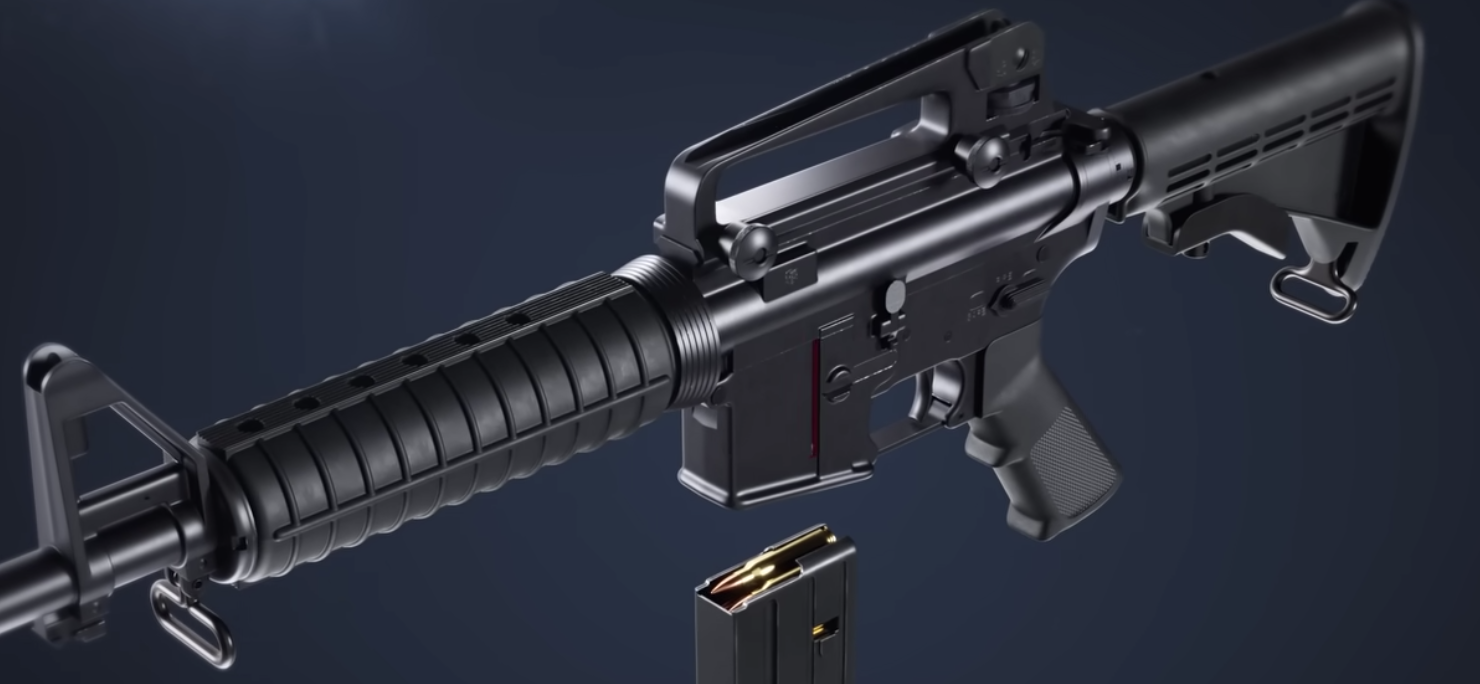
Here is all of the publicly released testimony by the chairman of the Joint Chiefs of Staff, in one place.
The Pentagon has come under heavy scrutiny for its actions — and its inaction — on Jan. 6, 2021. Most notably, the D.C. National Guard arrived at the Capitol more than three and a half hours after the violence began. And it emerged this summer that the Pentagon wiped the phones of top officials as they departed at the end of the Trump administration, deleting key records from that day. But in testimony given behind closed doors to the House committee investigating the attack on the Capitol, Army Gen. Mark Milley, the Defense Department’s top uniformed officer, has helped shed some light on what took place at the Pentagon on Jan. 6 and in the days that followed. During its blockbuster televised hearings, the Jan. 6 committee has played short audio clips of testimony by the chairman of the Joint Chiefs of Staff. All of the audio that has been released so far was played at the July 21 hearing, although some of the snippets were also previewed on June 9, the first day of the hearings. More testimony from Milley may come out when the hearings resume in September, once Congress returns from its summer recess. In the scraps of testimony that the committee has presented, Milley has addressed then-President Donald Trump’s conspicuous inaction, then-Vice President Mike Pence’s plea to activate the National Guard, and his own phone calls with then-White House Chief of Staff Mark Meadows in the aftermath of the attack. Here’s all of Milley’s testimony that has been released so far. Milley’s response to Trump’s behavior on Jan. 6 In a snippet presented by Rep. Adam Kinziger, who was driving home Trump’s refusal to act during the attacks on the Capitol, Milley explained his reaction to Trump’s behavior. “Yeah. You know, commander in chief, you got an assault going on on the Capitol of the United States of America. And there’s nothing? No call? Nothing? Zero?” Milley said. Kinzinger, an Air Force veteran, added, “I can tell you that General Milley’s reaction to President Trump’s conduct is 100% correct.” It was Pence who called to activate the Guard Later in the July 21 hearing, Rep. Elaine Luria relied on testimony by Milley to demonstrate that it had been Vice President Mike Pence — and not Trump — who made efforts to secure the Capitol so it could resume its joint session, including by calling military leaders. Milley told the committee: “Vice President Pence? There were two or three calls with Vice President Pence. He was very animated, and he issued very explicit, very direct, unambiguous orders. There was no question about that.” Pence’s orders were ‘direct’ and ‘firm’ “[Pence] was — and I can give you the exact quotes, I guess, from some of our record somewhere — but he was very animated, very direct, very firm,” Milley said. “And to Secretary Miller, ‘get the military down here, get the Guard down here, put down this situation,’ etc.,” Milley added, paraphrasing Pence. Christopher Miller, then the acting defense secretary, told the D.C. Guard at 3:04 p.m. to deploy to the Capitol. The Guard arrived at the scene at 5:40 p.m., after the violence had largely ended. Milley refused to join in on Trump’s narrative Luria then introduced a snippet of Milley describing a phone call he had with Mark Meadows, Trump’s chief of staff. “[Meadows] said — this is from memory. He said, ‘We have — we have to kill the narrative that the vice president is making all the decisions. We need to establish the narrative that, you know, that the president is still in charge and that things are steady or stable or words to that effect.’ I immediately interpret that as politics, politics, politics,” Milley said. “Red flag for me personally, no action, but I remember it distinctly,” he added. “And — and I don’t do political narratives.” According to recent reporting in The New Yorker, Milley has been especially sensitive to any appearance of politicization since he received criticism for marching in battle fatigues in a June 2020 photo op with Trump after the president had the area forcibly cleared of Black Lives Matter protesters. Trump was in a ‘dark place’ The committee also presented testimony by administration officials who said they were disgusted by Trump’s response to the attack but did not resign because they were, in Kinzinger’s words, “sincerely worried that leaving President Trump to his own devices would put the country at continued risk.” Milley described calls he had with members of Trump’s inner circle, including the White House chief of staff and the secretary of state, to keep tabs on the president. “There was a couple of the calls where, you know, Meadows and/or Pompeo, but more Meadows, you know, how — how is the president doing?” Milley recalled. “Like, Pompeo might say, ‘How’s the president doing?’ And Meadows would say, ‘Well, he’s in a really dark place.’ Like here’s one, for example, on the 7th of January.” Milley then quoted what Meadows told him on that call: “POTUS is very emotional and in a bad place.” In private, Milley referred to these conversations as “land the plane” calls, according to recent reporting in The New Yorker.
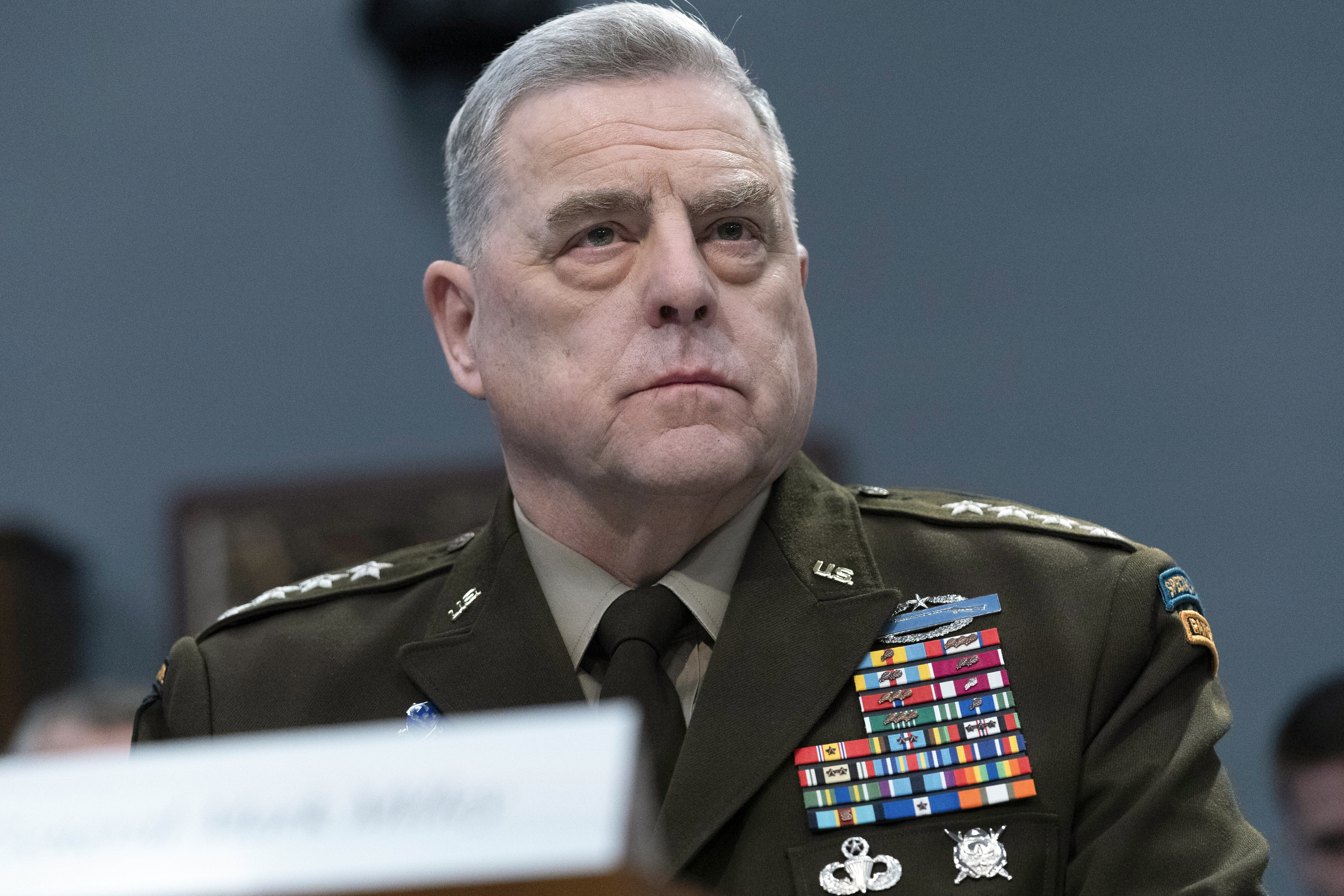
The seven-month underway spanned the Pacific Ocean and included exercises with Japan and other nations.
The aircraft carrier Abraham Lincoln, its strike group and air wing made their way home this week after a seven-month deployment that spanned the Pacific. Lincoln is expected to arrive in its San Diego home port today, while the squadrons of Carrier Air Wing 9 flew back to their California and Washington state home bases this week. The carrier strike group also included the guided-missile cruiser Mobile Bay and the guided-missile destroyers Gridley, Sampson and Spruance, which were all scheduled to return home this week. A fourth strike group destroyer, Fitzgerald, is expected home in the coming weeks, according to U.S. 3rd Fleet officials. The strike group was the first to deploy with a Marine Corps F-35C Lightning II squadron, Marine Fighter Attack Squadron 314, and the second to deploy with Fleet Logistics Multi-Mission Squadron 30 and its CMV-22 Ospreys. “By and large, it was a completely seamless, flawless integration,” Lincoln’s commanding officer, Capt. Amy Bauernschmidt, told reporters Wednesday. Air squadrons coming home include Strike Fighter Squadrons 41, 151 and 14, as well as Electronic Attack Squadron 133, Airborne Early Warning Squadron 117, Helicopter Sea Combat Squadron 14 and Helicopter Maritime Strike Squadron 71. All told, the wing flew 10,250 sorties during the deployment, according to U.S. 3rd Fleet. During its 220 days underway, the Lincoln strike group steamed across more than 65,000 nautical miles, conducted presence patrols and conducted two exercises with Japanese forces, while also participating in the multinational Rim of the Pacific exercise in Hawaii that wrapped up last month. “What they did mattered,” Bauernschmidt said Wednesday as her ship neared San Diego. “And their hard work made the difference.”

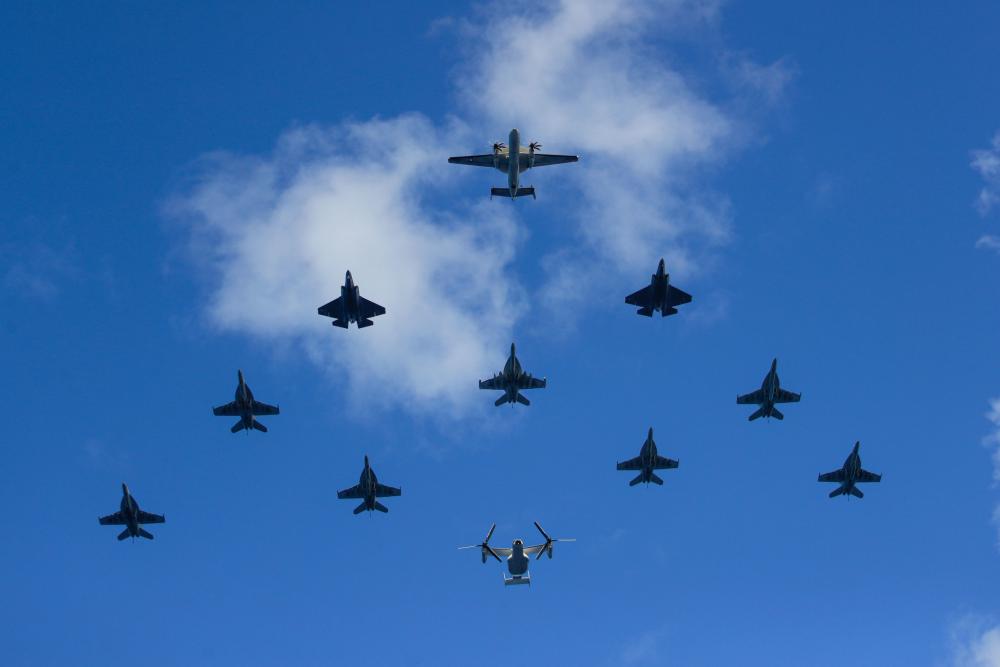
The carrier is expected to replace the aircraft carrier Harry S. Truman, which is deployed to the U.S. 6th Fleet area of operations.
The USS George H.W. Bush deployed Wednesday from Naval Station Norfolk — the aircraft carrier’s first deployment since 2017. The Bush is expected to replace the aircraft carrier Harry S. Truman, which is currently deployed to the U.S. 6th Fleet area of operations. “We bring the full-range of U.S. and allied maritime power in support of national security and defense objectives wherever we sail,” said Rear Adm. Dennis Velez, commander of commander of Carrier Strike Group 10, in a Navy news release. “Throughout our deployment we will continue to operate with and reassure our allies, maintain open sea lanes for trade and increased prosperity, and deter — or if necessary — destroy our adversaries.” The Bush previously deployed in 2017 to the Mediterranean and Persian Gulf, where the carrier conducted flights and sorties over Iraq and Syria to combat the Islamic State. During that deployment, the embarked Carrier Air Wing 8 dropped nearly 1.8 million pounds of ordnance. Aircraft carrier Bush leaves Norfolk Naval Shipyard after 30 months of maintenance The current carrier strike group includes the guided-missile destroyers Nitze, Truxtun, Farragut and Delbert D. Black, the guided-missile cruiser Leyte Gulf, and Carrier Air Wing 7. The carrier strike group got the green light to deploy in June when it concluded its composite training unit exercise, known as COMPTUEX, with the 26th Marine Expeditionary Unit out of Camp Lejeune, North Carolina; the Italian destroyer ITS Caio Duilio; and submarines from Brazil and Colombia. “This is the first time that a marine expeditionary unit has integrated into a carrier strike group’s COMPTUEX,” Marine Corps Col. Dennis Sampson, commanding officer of the 26th MEU, said in a Navy news release in June. “This COMPTUEX allowed the 26th MEU to partner with Expeditionary Strike Group 2 as a higher echelon command mirroring a marine expeditionary brigade or the current Task Force 61/2 construct.” The Task Force 61/2 construct refers to the 6th Fleet’s Task Force 61 Naval Amphibious Forces Europe/2d Marine Division, which was established in April to consolidate Blue-Green forces in Europe. The carrier wrapped up a 30-month long maintenance period in August 2021, which included a complete shaft and propeller overhaul, rudder refurbishment, catwalk and tank preservation, along with modernization updates to electronic and combat systems, catapults and hotel services, according to the service. The drydocking planned incremental availability kicked off at Norfolk Naval Shipyard in February 2019.
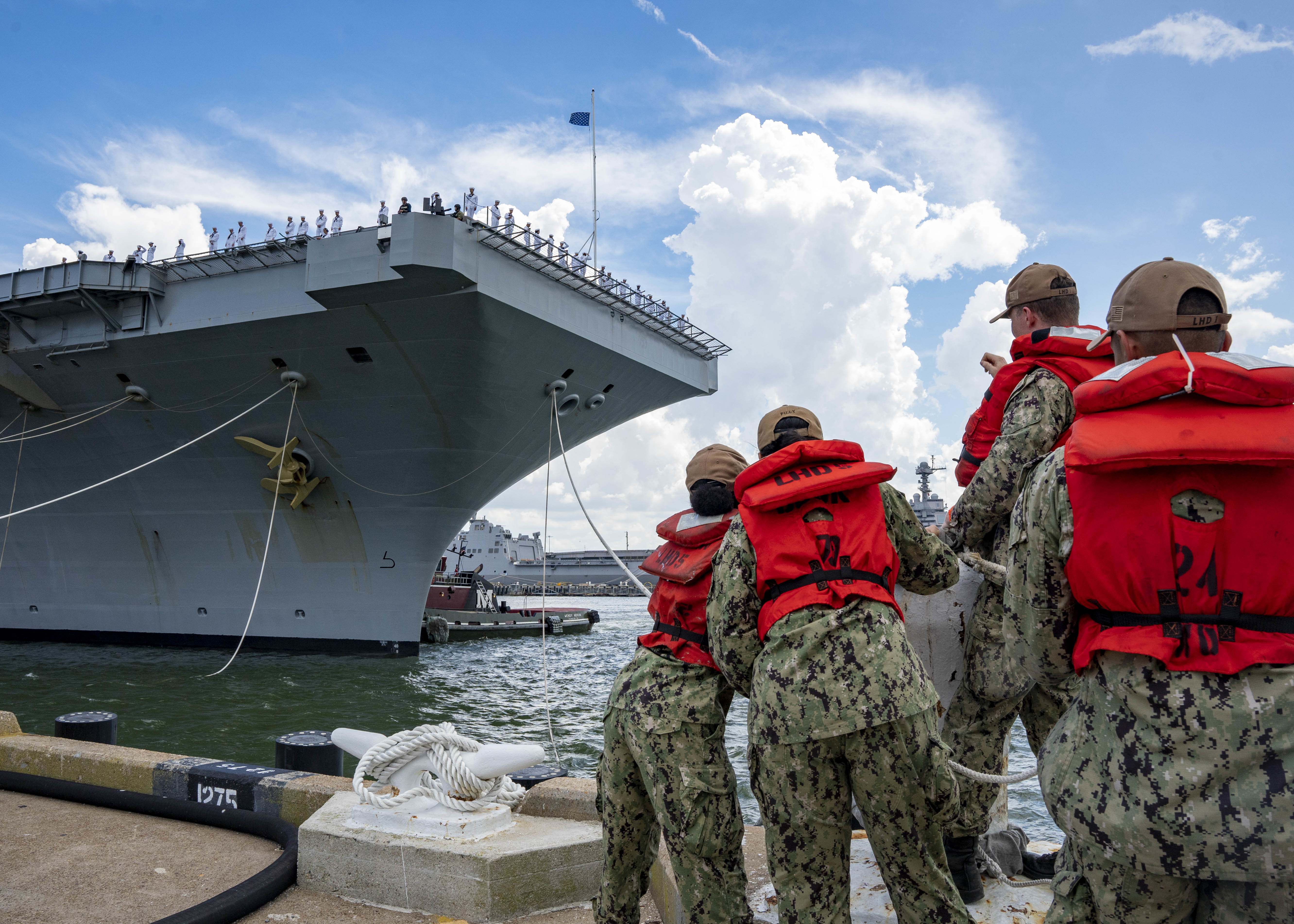
The murder-for-hire was reportedly in response to the U.S. assassination of Qassim Soleimani, commander of the Revolutionary Guard's elite Quds Force.
A member of Iran’s Islamic Revolutionary Guard Corps is facing charges in what the Justice Department is calling a “murder for hire” plot that targeted former National Security Advisor John Bolton. Iranian national Shahram Poursafi, 45, who also goes by Mehdi Rezayi, allegedly plotted the murder-for-hire in response to the United States’ January 2020 assassination of Qassim Soleimani, commander of the Revolutionary Guard’s elite Quds Force. Poursafi offered to pay $300,000 to anyone who would carry out the assassination of Bolton in or around Washington, according to a DoJ release. Soleimani, an architect of Tehran’s proxy wars in the Middle East, was killed in a targeted airstrike at Baghdad’s international airport. “This is not the first time we have uncovered Iranian plots to exact revenge against individuals on U.S. soil, and we will work tirelessly to expose and disrupt every one of these efforts,” Assistant Attorney General Matthew G. Olsen said in a release. “The Justice Department has the solemn duty to defend our citizens from hostile governments who seek to hurt or kill them.” Poursafi, who remains at large abroad, allegedly instigated the plot in October 2021 when he contacted a U.S. resident he’d previously connected with online, the report said. The following month, the IRGC member used an encrypted messaging platform to offer the individual $300,000 to hire someone to murder Bolton, providing the contact with screenshots of Bolton’s work address and asserting that he would require video documentation of the murder. By January 2022, Poursafi was growing restless, reportedly bemoaning to his U.S. contact that the murder had not been completed by the two-year anniversary of Soleimani’s death. Poursafi then provided his contact with details about Bolton’s schedule that “do not appear to have been publicly available,” according to court documents. He told the U.S.-based individual they would be able to “finish the job” since he believed Bolton’s home did not have a security presence. “Iran’s Islamic Revolutionary Guard Corps, through the defendant, tried to hatch a brazen plot: assassinate a former U.S. official on U.S. soil in retaliation for U.S. actions,” said U.S. Attorney Matthew M. Graves. “Iran and other hostile governments should understand that the U.S. Attorney’s Office and our law enforcement partners will do everything in our power to thwart their violent plots and bring those responsible to justice.” In addition to the plot to murder Bolton, Poursafi reportedly told his informant about a second “job” — worth $1 million — that had already had surveillance completed by someone “working on behalf of the IRGC-QF,” the report said. Charges levied against Poursafi include using interstate commerce facilities in the commission of murder-for-hire and providing and attempting to provide material support to a transnational murder plot. The charges carry maximum sentences of 10 and 15 years, respectively, as well as fines. “An attempted assassination of a former U.S. Government official on U.S. soil is completely unacceptable and will not be tolerated,” the FBI’s Assistant Director in Charge Steven M. D’Antuono said in a release. “The FBI will continue to identify and disrupt any efforts by Iran or any hostile government seeking to bring harm or death to U.S. persons at home or abroad. This should serve as a warning to any others attempting to do the same.”

Steven Seagal visits Ukraine amid prison bombing controversy.
Early reports from the Russian invasion of Ukraine suggested that President Vladimir Putin’s military had deployed, of all people, actor Steven Seagal alongside its troops. And while the outlandish information released at the time turned out to be false, a Russian outlet did publish a video Tuesday that showed the former action star standing among the wreckage of eastern Ukraine’s Olenivka prison, where a recent attack left dozens of Ukrainian POWs dead. Russia and Ukraine are each casting blame for the prison’s destruction, meanwhile, with Moscow alleging that Ukrainian forces used U.S.-made ordnance—a High Mobility Artillery Rocket System, or HIMARS—to bring the building down, according to the Washington Post. In a video posted to Russian news site TVZVEZDA, Seagal, who is identified as a special representative of the Ministry of Foreign Affairs of the Russian Federation for Humanitarian Relations between Russia and the U.S., appears to serve as a spokesperson against Ukraine’s use of HIMARS. “It definitely looks like a rocket,” Seagal is reported to have said. “If you look at the burning and other details, of course it’s not a bomb. Not to mention the fact that Russia really has a lot of artifacts from HIMARS. This is where HIMARS hit, 50 people were killed, another 70 were injured.” According to the Russian site, Seagal added a conspiracy angle by suggesting that HIMARS was used by Ukrainian troops because the country’s President Volodymyr Zelenskyy wanted to silence a “Nazi” being held at the prison. “The interesting thing is that one of the killed Nazis is a Nazi who just started talking a lot about Zelensky,” Seagal added, “and that Zelensky is responsible for the orders about torture and other atrocities that violate not only the Geneva War Convention, but are also crimes against humanity.” The Post, however, indicated that the images from the attack on Olenivka prison are not consistent with HIMARS. “The experts could not definitively say what caused the damage, but they pointed to a lack of shrapnel marks and craters and only minimal damage to internal walls in the available visuals of the aftermath,” the Post reported. “Instead, there were visible signs of an intense fire, which is at odds with damage caused by the most common HIMARS warhead.” TVZVEZDA reported that Seagal was among a number of representatives to visit the prison. “Media representatives from France, Italy, Germany, Serbia, Nicaragua, North Korea got acquainted with the evidence that the strike was carried out by Ukrainian militants and from HIMARS, and also saw with their own eyes all the destruction at the site of this barbaric shelling,” the news site reported. Open-source intelligence analyst Oliver Alexander weighed in on the veracity of the Seagal footage and indicated its authenticity. Imagery of the prison from BBC appears to match elements of Seagal’s surroundings as he gave his statement. The same imagery was also matched with a scene in which the action star is positioned on a bench with blast artifacts, footage taken two weeks after the area was originally photographed, Alexander suggested on Twitter. “[That’s] not how I would expect this ‘smoking gun’ evidence to be handled if Russia, 1. believed it was actual evidence and 2. had any intention of letting UN investigators to the site,” Alexander told Military Times. Odessa Journal also verified the visit. Seagal is known for his pro-Russian stature. In particular, he showed strong support for Putin’s plan regarding the annexation of Crimea. In 2016, the actor was given Russian citizenship.
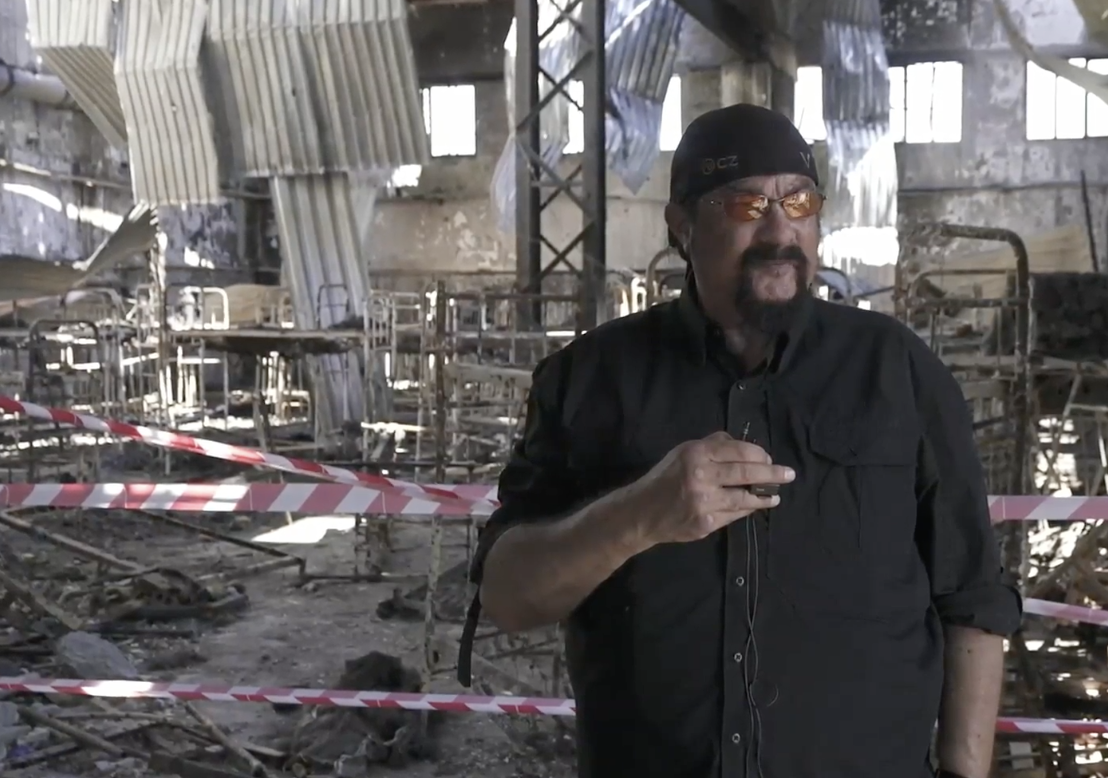
Army encourages college grads to "skip entry level" and join the military instead.
Calling all college seniors. Are you worried about having to wear a suit, fetch coffee and make copies in your first job post-graduation? U.S. Army Recruiting Command would like you to consider an alternative: become a soldier. Its newest ad, “This Instead,” says that unlike civilians who enter the job market fresh out of college, you won’t be the bottom rung on the totem pole. You’ll be a leader. Because everyone knows that, just out of Officer Candidate School, Army 2nd lieutenants are in charge of everything. And they are most certainly not the butt of any jokes about rank entitlement and poor land navigation skills. This video is part of the Army’s latest recruiting campaign: “Decide to Lead.” The ad’s closing line suggests soldiers can “skip entry level.” It follows the branch’s latest line of recruitment pushes designed to make civilian life look terrible in comparison to military life. The last batch, “Know Your Army,” centered on the so-called benefits of being in the military, including pension, paid parental leave, early retirement, and homebuying. While it is true that officers are technically in leadership roles placed higher in the hierarchy of rank structure than enlisted troops, all soldiers must earn their stripes with grunt work, trust, and team building — just like any corporate job in America. Even though the Army might do work to inflate newly minted officers’ egos during OCS, soldiers must also contend with the inability to choose where in the world they live, what jobs they have, or if the housing where they reside is livable or has wall-to-wall black mold. Even coffee-fetching civilians never have to worry about that. In a House Armed Services Committee panel held July 19, Army leadership revealed it will likely be at least 7,000 soldiers short of its staffing goal at the end of the fiscal year, Sept. 30. While retention is high at 57,000, about 3,000 more soldiers reenlisted than than the expected 54,000, the Army’s number issues lie with recruiting. “We are examining a wide range of additional steps we could take in the short and longer term to recruit more soldiers into the Army without lowering standards or sacrificing quality,” said Army Secretary Christine Wormuth in a previous statement to Army Times.

The aircraft, which fell overboard as the carrier completed an at-sea replenishment July 8, was pulled from a depth of roughly 9,500 feet.
The Navy has salvaged the F/A-18E Super Hornet jet that blew off the deck of the aircraft carrier Harry S. Truman and into the Mediterranean Sea in July. The aircraft, which went overboard due to strong winds and rains during the carrier’s at-sea replenishment July 8, was pulled from a depth of roughly 9,500 feet, then hoisted onto the multi-purpose construction vessel Everest on Aug. 3. Sailors from the Truman, the Navy’s Task Force 68, Naval Sea Systems Command’s Supervisor of Salvage and Diving, Naval Strike Fighter Wing Atlantic, and the U.S. 6th Fleet used a CURV-21 — a 6,400-pound, remotely operated deep ocean salvage vehicle — to retrieve the F/A-18. “Our task tailored team operated safely and efficiently to meet the timeline,” said Lt. Miguel Lewis, U.S. 6th Fleet salvage officer, in a Navy news release. “The search and recovery took less than 24 hours, a true testament to the team’s dedication and capability.” Truman Carrier Strike Group deployment extended The aircraft is headed to a “nearby military installation” and is slated to return to the U.S. The incident, which is under investigation, only resulted in minor injuries for one sailor, according to the Navy. The Truman deployed to Europe from Norfolk, Virginia, in December. The carrier’s strike group includes guided-missile destroyers Bainbridge, Cole, Gravely and Jason Dunham, and the guided-missile cruiser San Jacinto. The French Navy frigate FS Languedoc and the Italian Navy frigate ITS Alpino also integrated with the carrier strike group in July to conduct surface, sub-surface and air defense training exercises together. The Truman’s fighter jet isn’t the only one salvaged from the briny depths this year. The service in March recovered an F-35C Lightning II from the South China Sea after a landing mishap on the aircraft carrier Carl Vinson.
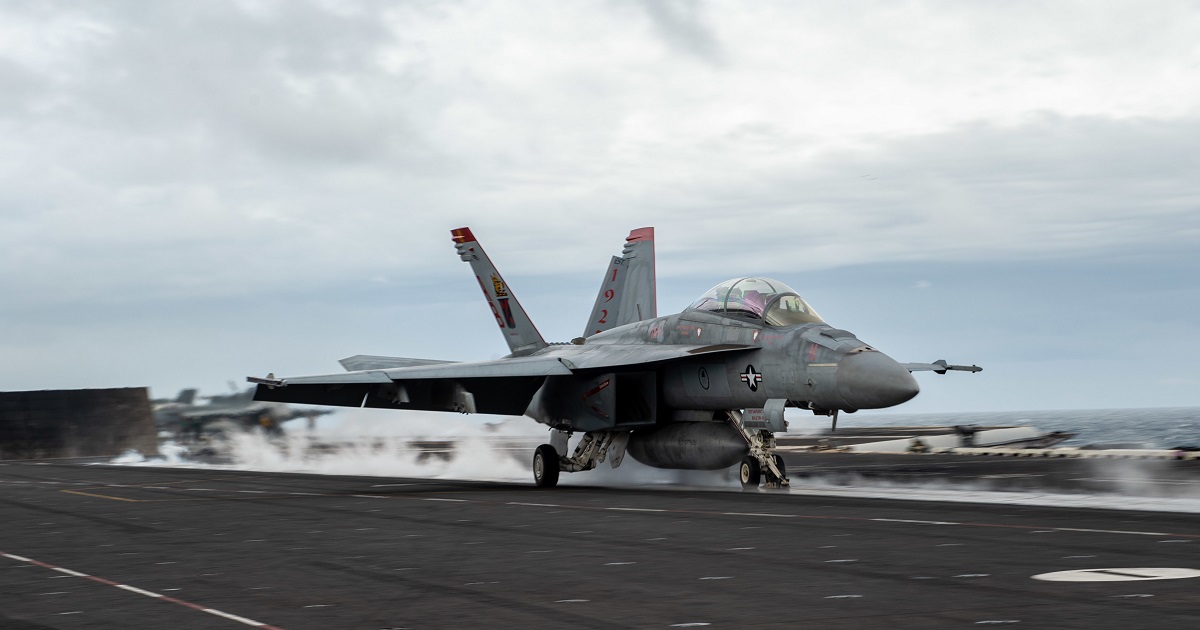
The USS Benfold Restoration Team is culled from the ranks of the ship and focused on rust removal, priming and painting.
Warship rust is a perennial point of debate among active-duty and veteran surface fleet sailors. Some argue that a bit of rust following a long underway reflects the hard work that the vessel and its crew undertook, while others think rusty gray hulls are “unsat” by their very nature and project a shabby version of U.S. military might. Out in the West Pacific waters of U.S. 7th Fleet, the Japan-based guided-missile destroyer Benfold has taken a novel approach to the problem by standing up a team of sailors devoted exclusively to busting rust, priming and painting the ship six-days-a-week, even as it operates in some of the globe’s hottest waters. The Benfold Restoration Team was started roughly two years ago, and today, team members protect the ship from the rusting ravages of saltwater to keep the destroyer looking good and to ensure it can serve for years to come, according to a recent Navy release. As a result of these efforts, “we have the best-preserved and best-looking ship in all of the U.S. Navy’s Pacific Fleet,” Benfold’s corrosion control officer, Lt. Geoffrey Polinder, said in the release. Standing up the restoration team allows sailors to continuously preserve and maintain the ship while deploying and operating. Lasers could replace sailors in peeling old paint off ships “Shipboard preservation never stops,” Benfold’s commanding officer, Cmdr. Marcus Seeger, said in a statement to Navy Times. “Our crews devote considerable time and effort to preserving and maintaining the interior-exterior areas of ships while balancing operational requirements and adhering to Navy shipboard procedures.” The idea for a fully focused restoration team akin to damage control petty officer and engineering repair divisions came to the command triad after Benfold left the yards in 2020, according to Benfold Command Master Chief Andrew Thomasson. While deployed sailors are well-known for working long hours and getting by on little sleep, officials say that the focus on Benfold’s restoration does not add to crew workload, and that the restoration work essentially becomes a crew member’s full-time gig if they are tapped for the duty. The restoration is conducted by crew members tapped for the temporary assigned duty, or TAD, according to Cmdr. Arlo Abrahamson, a Naval Surface Forces spokesman. Keeping Benfold looking good becomes their main job. “Under this construct, the preservation is not an added burden, but is the Sailor’s primary duty and does not necessarily add to the tasks or length of workday,” Abrahamson said in an email. “Additionally, they still stand their normal inport or underway watch.” Sailors are already assigned TAD within the ship for such jobs as damage control maintenance or food service support, Abrahamson told Navy Times. Benfold Commander Master Chief Andrew Thomasson said in the Navy release that divisional leadership initially resisted having their sailors taken away for the restoration gig. “However, well into its second year of existence…the Benfold Control Division, now known as the Benfold Restoration Team, has become accepted and popular among both leadership and off-ship support entities,” Thomasson said. Benfold’s effort to stay fresh and clean shows that ships can be “shipshape and seaworthy” with a bit of effort, direction and ownership, Thomasson said. “My Sailors openly brag how their 26-year-old destroyer with two years out of the (yards)…is the best-looking ship on the Yokosuka waterfront,” he said in the release. Despite the restoration team’s focus, individual departments are still required to conduct their own corrosion control and daily topside preservation, according to the Navy. Thomasson likened the team to a dentist performing root canals, while division or department efforts are akin to daily teeth brushing, which helps limit the need for more extreme work. Thomasson also said in the release that Benfold’s efforts help save lives. “When a ship looks pristine, new and looking her best, our enemies hesitate to mess with us because when we’re looking our best, we obviously must be performing at our best,” Thomasson said. “And just the opposite when we look dirty and rusty. So, in short, when a ship is looking her best, just look at it as saving lives.”

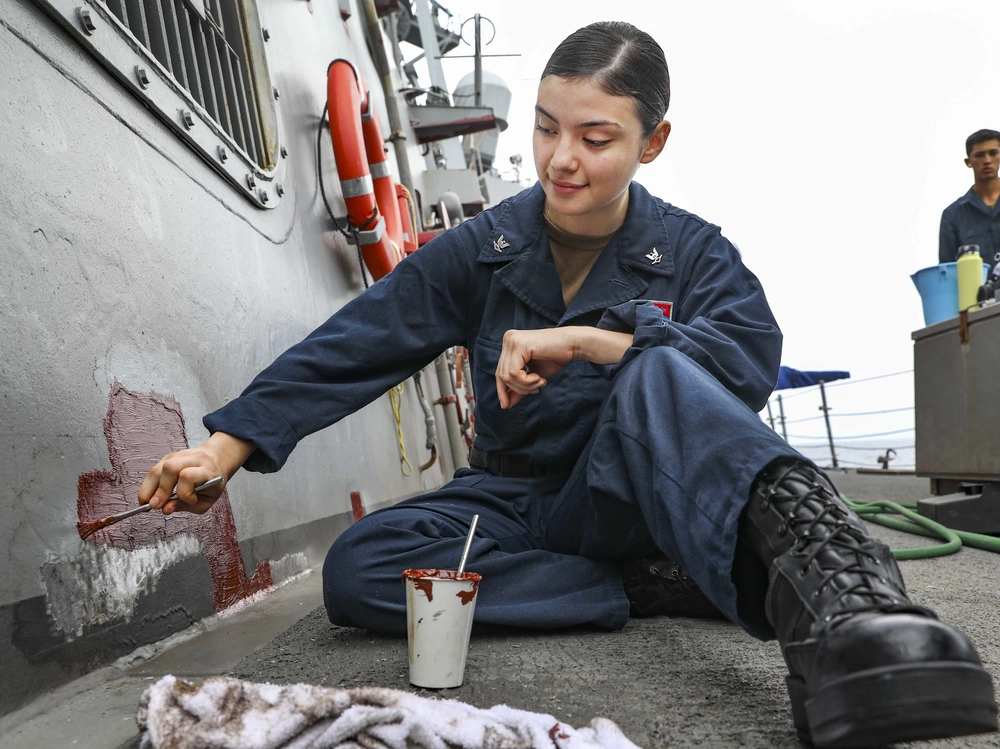
The command is primarily composed of canvassing recruiter professionals to educate others — including active duty sailors, veterans and civilians — about the Navy Reserve.
The Navy has stood up Navy Recruiting Reserve Command, a move that comes as the armed services struggle with recruiting numbers this fiscal year. The objective is to provide the service with a unit specifically targeting sailors and others who’ve previously served. The command is primarily composed of canvassing recruiter professionals to educate others — including active duty sailors, veterans and civilians— about the Navy Reserve, according to the service. “The challenge that has affected us all is the competition for our military and civilian talent, and that of our reserve market,” said Capt. Karen Muntean, commander of Navy Recruiting Reserve Command, in a news release. “This competitive employment market has forced us to think about short- and long-term organizational structures that make sense.” This move is part of Commander Navy Recruiting Command’s realignment of its command structure, which went from a three geographic region model — east, central and west) to a two region model (east and west) for active duty recruiting, Reserve New Accession Training and Training and Administration of the Reserves, according to the Navy. That frees the new NRRC to focus on the prior-service Reserve mission in a competitive job market. The command is slated to hold an inaugural production conference in Millington, Tennessee, in September. “The objective for the initial NRRC leadership conference is to connect our leaders, accept mission assignments, identify strategic partnerships and move forward together,” Muntean said. Citing recruiting woes, Army will shed up to 28,000 troops in next year Leaders like Gen. Joseph Martin, the Army’s vice chief of staff, have recently cited manning struggles stemming from recruiting. The Army anticipates it will miss its end strength goal for fiscal 2022 by approximately 7,000 troops, Martin said in July. Commanders from each of the services have said such factors as more thorough medical screenings, fewer Americans eligible to serve, and low civilian unemployment have contributed to the recruitment challenges. Other services, including the Navy, are faring better than the Army, though. Chief of Naval Operations Adm. Mike Gilday told reporters July 26 that while recruiting is still proving a challenge, the Navy is currently on track to meet its goals. The sea service is striving to cater to young people and is reevaluating certain policies that previously barred many of them from serving, Gilday said. He cited recent changes like last year’s policy update that allowed those who’d previously tested positive for marijuana to join the service. “This isn’t the first time that we’ve faced these challenges,” Gilday said. “We just can’t rest on our laurels. We have to be more innovative. We have to be more creative. Our outreach has to improve.” Last year, the Navy surpassed its goals, recruiting a total of 33,559 new enlisted sailors to the fleet in FY2021, 159 more than its target of 33,400 new recruits.
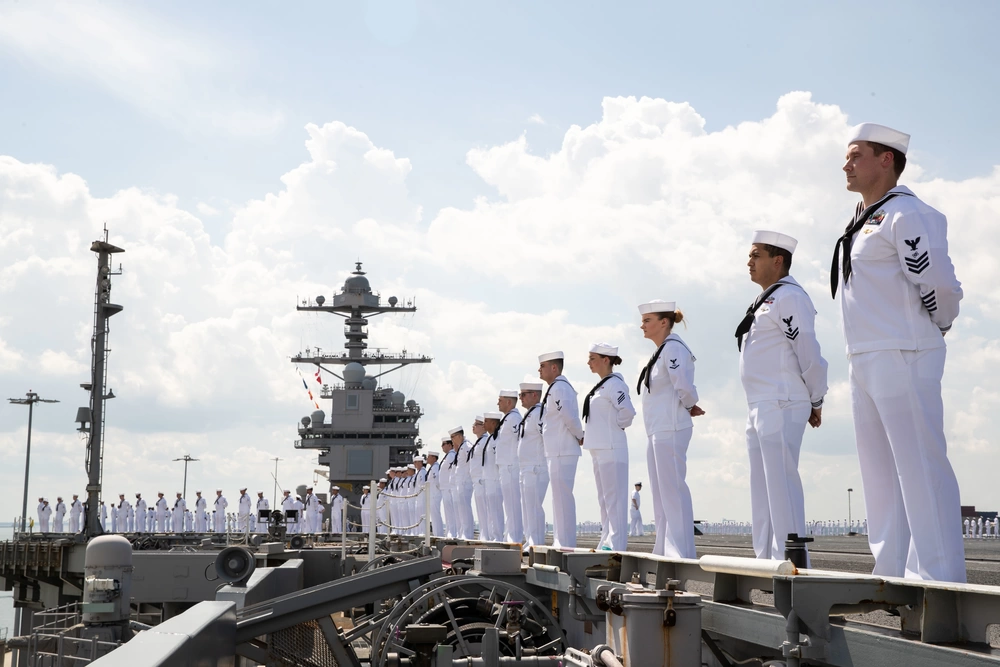
Military officials won’t answer whether they’ve found the problem on any planes.
Editor’s note: This story was updated at 8:00 p.m. on Aug. 7, 2022, with more information from the ejection seat manufacturer. The Pentagon hasn’t found any defective ejection seat parts on its F-35 Joint Strike Fighters, or on other potentially affected combat and training aircraft, during widespread checks that began in July, a spokesperson for seat manufacturer Martin-Baker told Air Force Times on Sunday. F-35s across the Air Force, Navy and Marine Corps have started returning to flight after three weeks of an effort to ensure the safety of America’s premier fighter jet, but U.S. military officials aren’t divulging many details as inspections progress. Several other fleets may be carrying the faulty seat component as well. At issue is the seat’s part called the cartridge, which contains magnesium powder that ignites to shoot an aviator out of the cockpit when they trigger an escape. Air Force grounds F-35As as ejection seat issue threatens fighter jets worldwide Martin-Baker spokesperson Steve Roberts confirmed that as of Aug. 5, only one faulty seat cartridge has turned up during inspections of the F-35 fleet — the one that first prompted concerns when it was discovered at Hill Air Force Base, Utah, in April. Martin-Baker discovered another pair of bad cartridges in its own inventory that same month, bringing the total found to three. The company has data that suggests the cartridge problem may be limited to the F-35, Roberts said in July. “Outside the F-35, not a single anomaly has been discovered worldwide as a result of the forensic investigation, which continues at pace,” he said. A routine inspection at Hill turned up an F-35 cartridge that was loose and missing its explosive charge, Air Force Times previously reported. Maintainers checked a limited number of other aircraft to see whether the discovery was an isolated incident and decided the jets could return to flight. Sometime in the months that followed, Martin-Baker conducted a quality-assurance check and found that its production line was turning out defective cartridges. It’s unclear when the company realized the problem, or when it alerted its military customers. Hundreds of Air Force training planes grounded over ejection seat concerns On July 19, the Pentagon’s F-35 Joint Program Office ordered workers to inspect all ejection seats within 90 days. That came three months after Hill found the first faulty cartridge, during which pilots could have run into the issue during an in-flight emergency. Military and company officials note that the defect only affects aircraft with cartridges from certain production batches, but have declined to answer how many cartridges were built as part of those lots or the number of aircraft on which they were installed. The situation picked up steam as it entered the public eye in the weeks that followed. The Navy said it began shipping replacement parts to its own maintenance centers with planes that could be affected by the problem on July 24, two days before it went public with the situation in a July 26 press release. The release disclosed that a cartridge problem affected some Navy fixed-wing aircraft — the F/A-18B/C/D Hornet and F/A-18E/F Super Hornet fighter jets, E/A-18G Growler electronic attack plane, and T-45 Goshawk and F-5 Tiger II trainers. Navy, Marine Corps replacing faulty aircraft ejection seat components But the sea service didn’t mention the Marine Corps F-35B or the Navy F-35C variants, despite finishing F-35C inspections on July 26, the same day as it issued its press release. The next day, Breaking Defense first reported that the Navy had grounded an undisclosed number of affected planes for inspections, not including F-35s. Then, after news reports that the entire Joint Strike Fighter enterprise was under scrutiny, the Navy confirmed it was done checking C-models. Rather than stretch inspections over a 90-day span, the Navy and Marine Corps checked each plane before their next flight. Possibly defective cartridges on the F-35Cs were replaced, Breaking Defense reported. “All potentially affected F-35Cs have been returned to operational status,” Navy spokesperson Cmdr. Zachary Harrell told Air Force Times Friday. Jet ejection seat, breathing system oversight gets ramped up in defense bill Marine Corps spokesperson Maj. Jay Hernandez said in an emailed statement on Friday that the service had inspected all ejection seat cartridges “even earlier in the maintenance cycle than recommended” by Martin-Baker. “Over 90 percent of the inspections on Marine Corps ejection seat cartridge actuating devices are now complete,” Hernandez said. That figure has stayed the same since at least July 29. The Navy said no one has died or been injured as a result; the Air Force has stressed its groundings are a precaution to get ahead of any fatalities. The F-35 engine is at a crossroads, with billions of dollars for industry at stake On Monday, Air Combat Command spokesperson Alexi Worley said maintainers were making “good progress” on F-35A inspections but declined to answer how many jets had been checked or returned to flight. ACC oversees most of the Air Force’s more than 300 F-35s and grounded its fleet July 29 to speed up its seat checks. Each fighter can resume normal flying as it passes inspection. “The stand-down of aircraft will continue through the weekend, and a determination to safely resume normal operations is expected to be made early next week, pending analysis of the inspection data,” Worley told Air Force Times on July 29. She did not provide an update by press time Friday. The F-35 is one step closer to carrying nuclear bombs. What's next? Air Education and Training Command, the Air Force organization that oversees F-35s used at pilot training squadrons in Arizona and Florida, also ordered the more than 100 Lightning IIs it owns to stand down on July 29 to expedite inspections. “A portion of the AETC F-35 fleet has been inspected and cleared for flight, with inspections continuing on the remaining aircraft,” the command said Tuesday. “Our ability to execute the highest priority missions supporting national defense are not impacted.” Other Air Force organizations that fly the F-35A overseas indicated their fleets are conducting missions but would not say whether the cartridge problem was discovered and resolved on any airframes. All F-35As in Europe have resumed normal operations, U.S. Air Forces in Europe-Air Force Africa said in a Monday email to Defense News. Pacific Air Forces confirmed to Air Force Times Thursday that it has continued to fly its aircraft after wrapping up inspections. Air Force to upgrade F-35A gas tanks to weather lightning strikes At least one international F-35 partner, Israel, has paused the jet’s operations to search for problems as well. Other nations that are currently part of or plan to join the F-35 program include Australia, Belgium, Canada, the Czech Republic, Denmark, Finland, Germany, Greece, Italy, Japan, the Netherlands, Norway, Poland, South Korea, Singapore, Switzerland and the United Kingdom. Lockheed Martin plans to build more than 3,000 F-35s for militaries around the globe. More than 800 planes have been delivered so far over the past 15 years, over half of which belong to the U.S. More than 1,700 pilots fly the F-35 from 26 bases and 10 ships globally. In April, the Government Accountability Office reported it will cost more than $1.7 trillion for the Pentagon to buy, operate and maintain the American jets. Neither Martin-Baker nor the F-35 Joint Program Office provided an update on how inspections are progressing by press time Friday. F-35 helmets that fix 'green glow' are on their way — but not to the Air Force Concerns about defective cartridges have also affected the Air Force’s training enterprise. Air Force Times first reported that Air Education and Training Command halted flights of two potentially impacted trainer fleets, the T-6A Texan IIs and T-38C Talons, on July 27. T-6 turboprop planes are used to teach basic flight skills, while the T-38 prepares pilots to fly fighter and bomber aircraft. The next day, the service said it would keep nearly 300 airframes across the T-6 and T-38 fleets on the ground while it double-checked their cartridges. That comprised about 40% of the T-38 fleet and 15% of the T-6 fleet, including planes at each undergraduate pilot training base and Naval Air Station Pensacola, Florida. The remaining airframes continued business as usual, and AETC said more trainers have since returned to the sky. “Members of the flying training wings continue to produce sorties every day with operational tempo increasing as the affected aircraft progress through the ejection seat inspection process and are cleared for flying,” AETC told Defense News on Tuesday. Lockheed touts handshake deal with Pentagon for next three lots of F-35s However, AETC would not say how many of its grounded trainers had cleared inspections and returned to the sky, nor how many remained to be inspected. Like their counterparts used in combat operations, it’s unclear if any faulty cartridges have been found on the trainers so far. The issue may also affect European airframes like the Eurofighter Typhoon and Dassault Rafale and aircraft flown by Turkey and South Korea, which use the same seat. The U.K. Royal Air Force stopped “non-essential” flights for its Red Arrows jets and Typhoon warplanes over safety concerns with its ejection seats, the Daily Mail reported. NATO has not responded to questions on how the ejection seat issue is affecting its aircraft.
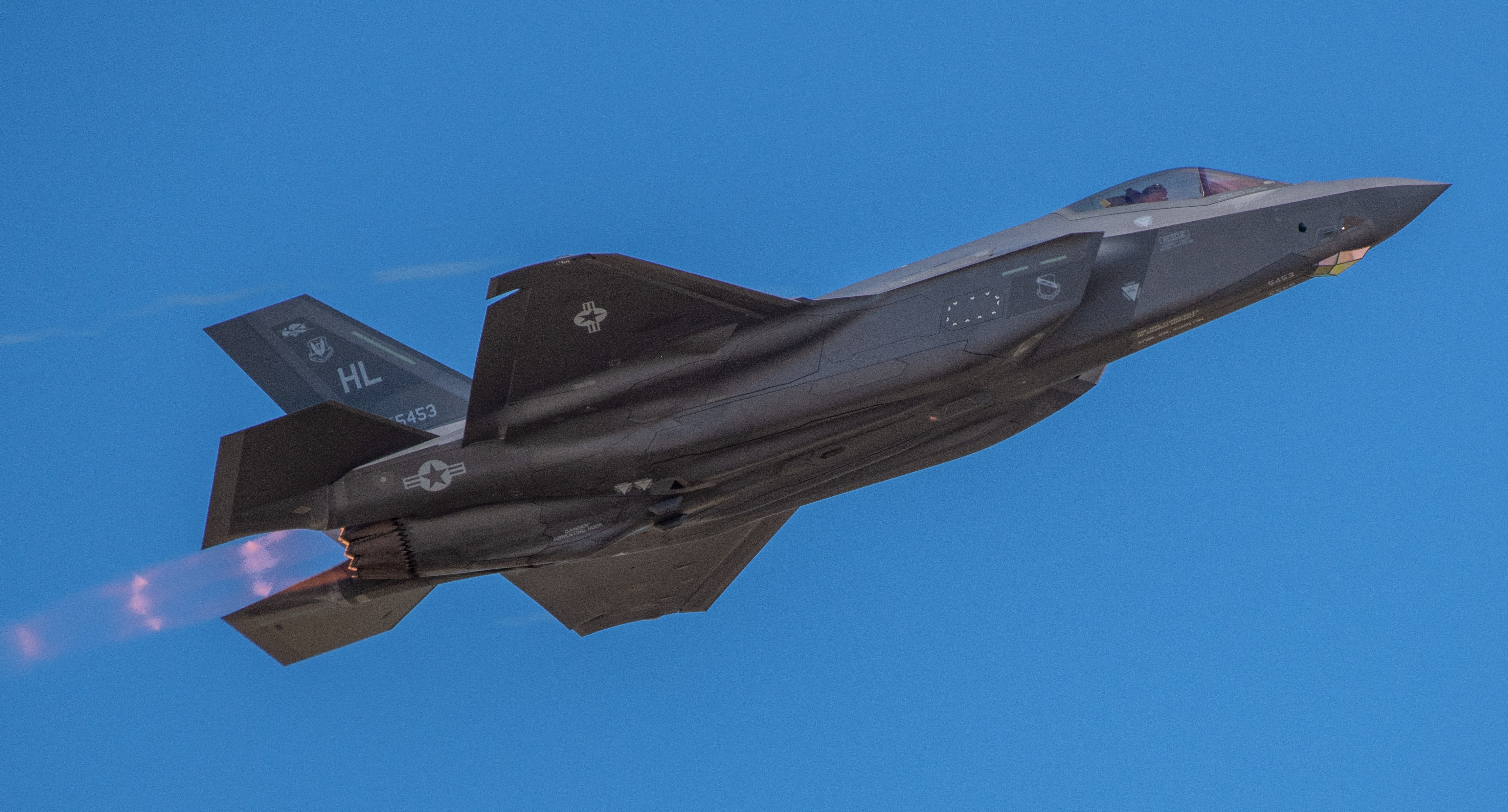
The homeport change comes as the service aims to bolster its destroyer fleet in Spain from four to six warships in the next several years.
The guided-missile destroyer Bulkeley left Norfolk, Virginia, Thursday for its new homeport in Rota, Spain — one of several recent shifts to the destroyer fleet based there. The homeport change, which aligns with the Navy’s plan to rotate out the destroyers based in Rota, also comes as the service aims to bolster its destroyer fleet in Spain from four to six warships in the next several years. The Bulkeley joins destroyers Arleigh Burke, Roosevelt, Paul Ignatius and Helicopter Maritime Strike Squadron 79 as part of the Forward Deployed Naval Force-Europe assets homeported in Rota. The guided-missile destroyers Ross and Porter are also currently based in Rota, but they are slated to shift homeports to Norfolk as part of the FDNF-E rotation in the next few months once the Bulkeley arrives in the 6th Fleet. Two more Navy destroyers will be homeported in Rota, Spain Meanwhile, it’s unclear which additional two ships will head to Rota. Officials with the Italy-based U.S. 6th Fleet told Navy Times in June that the two other destroyers wouldn’t arrive in Rota until at least fiscal 2024. According to White House National Security Advisor Jake Sullivan, the beefed up destroyer fleet “will help increase the United States’ and NATO’s maritime presence and all the relevant maritime domains in the Euro-Atlantic area.” “The Bulkeley crew has been working extremely hard the past year to prepare to join our forward deployed forces in Rota and work with our partners and allies in the region,” said Capt. Mac Harkin, commanding officer of the Bulkeley, in a Navy news release. “We are excited to join our sister ship and aviation units already at the tip of the spear to assure our allies, respond to threats as required and ensure support to global operations.” In June, the commanding officer and command master chief of the Bulkeley were relieved due to a “loss of confidence” in their leadership abilities. Harkin has served as the commanding officer since then. The Bulkeley was commissioned in 2001.

“The interesting thing in the IT world or the network world is what’s patched and 100% compliant today might not be patched tomorrow, because vulnerabilities ebb and flow.”
JESSUP, Md. — On the borderlands of Fort Meade, the U.S. Navy is taking a tandem approach to cyber defense and talent development. Inside an unassuming office building, a few floors up and tucked into a spread of austere rooms, is Operation Cyber Dragon. The brainchild of Chief Warrant Officer Scott Bryson, the hands-on endeavor authorized by U.S. Fleet Cyber Command aims to fix virtual vulnerabilities — shoring up systems bit by bit — while also fostering a new wave of cybersecurity expertise. “We’re doing it so that we can continue to mitigate and fortify our attack vectors and secure our networks even better,” Bryson told reporters July 22, while standing among computers, cubicles and colleagues. Cyber Dragon kicked off in March, with the second phase of the program now underway. In its current form, the operation is focused on fortifying unclassified networks and rooting out common, widespread digital weaknesses: lax security settings, easily guessed credentials, unpatched software and more. Doing so, officials said, makes its more difficult for hackers to break in and wreak havoc. According to the Navy, some 14,500 issues were initially identified on service networks as in need of addressing. Each could be a foothold for an adversary, especially at a time of heightened cyber conflict. Deputy Chief of Naval Operations for Information Warfare Vice Adm. Jeffrey Trussler in a February memo warned sailors that “cyberattacks against businesses and U.S. infrastructure are increasing in frequency and complexity.” To tackle such a large and evolving workload, manpower was needed. So Bryson turned to the reserves, including to people not necessarily cyber fluent. “I went to the reserve forces that we have at 10th Fleet, and I requested some bodies, and I came up with a training plan. And I said, ‘Well, if you give me X amount of sailors for X amount of days, I think that we can get after a percentage of our vulnerabilities, patching and scanning.’ The reserve force came through with the manning, they came through with the space,” Bryson said. “When we did the posting, it wasn’t limited,” he added. “I said I’ll take anybody.” Among the dozens of participants were, by day, a long-haul truck driver, a banker and a small-business owner. The operation offers reservists the chance to fulfill annual training requirements while also making a tangible difference. Cyber Dragon teams have thus far identified and remediated thousands of issues — everything from several “high-profile exposures” to default usernames and passwords to discovering “data where we didn’t want data to be,” according to officials involved with the effort. “A default username and password means that anybody could could log in and execute on here, on these particular machines. Now, they weren’t national security-related. There was no major issue directly to national security,” said Rear Adm. Steve Donald, the deputy commander of Fleet Cyber Command/U.S. 10th Fleet. “But in some cases, it could have caused harm to individuals, identity theft or something of that nature. We were able to shut that down.” Teams have also zeroed in on potential spoofing certificates, risky software use and cloud management hiccups. Some 50 sailors have been trained on state-of-the-art attack surface management software, used to discover, classify and assess the security of an organization’s assets, with 100 more expected to undergo the same education in the coming months. Lt. Blake Blaze, a reservist with a cyber and tech background, said the operation has improved both his understanding of the field and the cybersecurity of the Navy. “My biggest motivation for staying in the reserves was I wanted to be close to the fight in case things get interesting with some of our near-peer adversaries,” Blaze said. “We’re not directly engaging with the enemy, so to speak, but we are trying to prevent their avenues of access to our networks.” The US Navy had cybersecurity wrong. Expect change. Both Bryson and Donald said they foresee a bright future for Cyber Dragon. As long as there are bugs to fix and the will to fix them, they said, the operation is viable. And Cyber Dragon’s format makes it mobile and replicable, appealing to workspaces and workforces of all sizes across the U.S. All that’s really needed is floor space, network connectivity and a few tools from third-party vendors. “The interesting thing in the IT world or the network world is what’s patched and 100% compliant today might not be patched tomorrow, because vulnerabilities ebb and flow,” Bryson said. “So do I think that this has legs to continue on? Absolutely.”

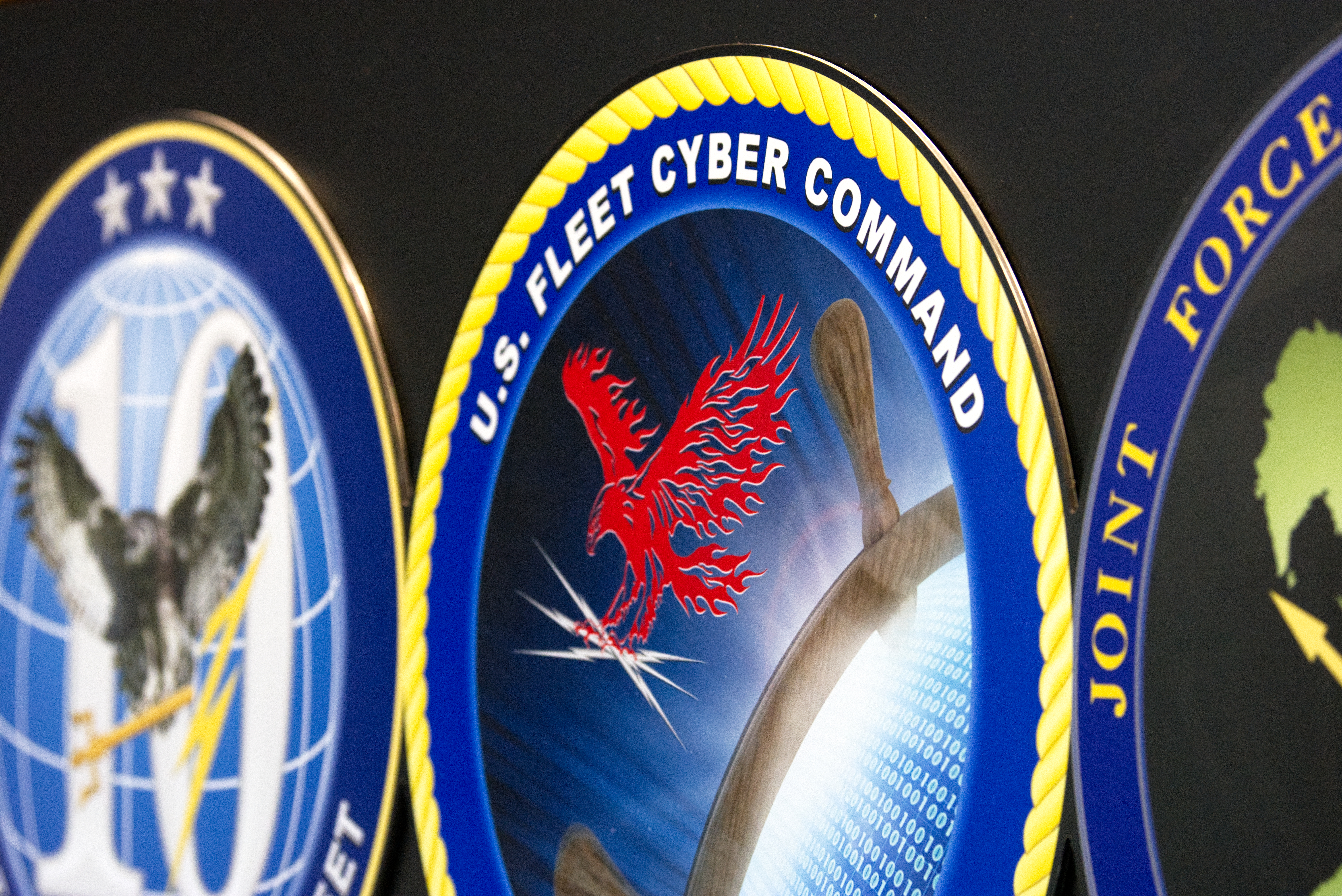
The trio have a September court date.
No good deed goes unpunished. In the case of some magnet fishers who cleared 86 rockets, a tank tracer round, and .50 caliber ammo belts from a river on Fort Stewart, the toll was a number of fines by Fort Stewart Conservation Law Enforcement. The group, led by treasure hunter Bryce Nachtwey, called the bomb squad after their magnet fishing dredged up the ammunition and 86 rockets in a Delta Airlines duffel bag, saying they were just trying to do the right thing. The exchange played out on Nachtwey’s YouTube channel: Outdoors Weekly. A Fort Stewart Military Police officer called to the scene noted that he had never seen something like this, and needed to check in with his command to see what next steps to take. However, upon arrival, the federal game warden with Fort Stewart Conservation Law Enforcement ticketed them for magnet fishing off the Fort Stewart bridge. “I didn’t see any signs,” said one of Nachwey’s teammates. “You’re all gettin’ tickets, you can come to court and talk to a judge, okay?” the warden said. “The reason magnet fishing is not allowed is because of exactly what y’all got right there. You don’t know what’s going to blow up and not blow up.” The alternative to tickets would be to go to jail, he added. Nachtwey said that he and his team had called the DNR ahead of time, which purportedly said magnet fishing is legal as long as it’s in a “green zone.” However, the warden stated that red (off-limit) and green (acceptable) zones don’t apply in this scenario because the group was on Fort Stewart property. Because the base is owned by the Federal Government, the Department of Natural Resources has no authority to issue such permission. The warden issued three tickets each to Nachwey and his two compatriots — two $130 tickets and one $80 ticket — for magnet fishing at Fort Stewart, entering a closed area and not having Fort Stewart permits. The trio’s federal court date is Sept. 9, 2022. (Correction: An earlier version of this story listed the game warden’s employer as the Georgia Department of Natural Resources)
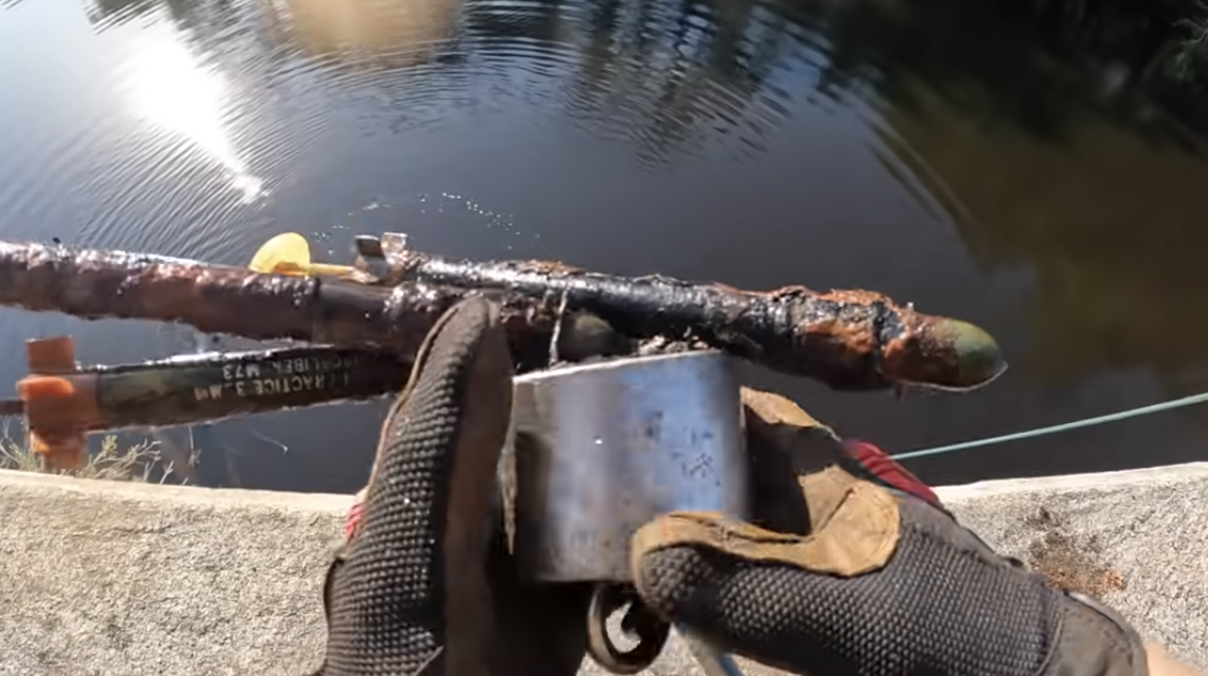
In 2019, the Navy authorized a significant expansion of its Growler program at Naval Air Station Whidbey Island.
SEATTLE — A federal judge has ruled that the Navy violated the National Environmental Policy Act during its environmental review process for the expansion of the Growler jet fleet at Naval Air Station Whidbey Island. The ruling said the Navy failed to disclose the basis for greenhouse gas emissions calculations, failed to quantify the impact on classroom learning, failed to take a hard look at species-specific impacts on birds, and failed to give detailed consideration to the Navy base in El Centro, California, as an alternative for Growler expansion, the Skagit Valley Herald reported. Island residents grumbling over Growlers The two-page ruling adopted the recommendation of a U.S. federal magistrate, who issued a report and recommendation in December in favor of state Attorney General Bob Ferguson’s lawsuit. The state and the other parties have 30 days to either agree on a remedy or on a briefing schedule to come up with a remedy, Ferguson said in a press release. In 2019, the Navy authorized a significant expansion of its Growler program at NAS Whidbey Island, increasing flight operations to more than 110,000 per year, the Attorney General Office said. In response, Ferguson filed a lawsuit arguing that the Navy violated the National Environmental Policy Act and the federal Administrative Procedure Act by improperly analyzing the impact the Growler expansion would have on human and environmental health. This lawsuit was announced and filed concurrently with a similar lawsuit from Citizens of Ebey’s Reserve. “The Navy has an important job,” Ferguson said in the release. “But that does not relieve the federal government of its obligation to follow the law and take a hard look at the public health and environmental impacts of its programs. Today the judge ruled that the Navy fell short of its obligation.”
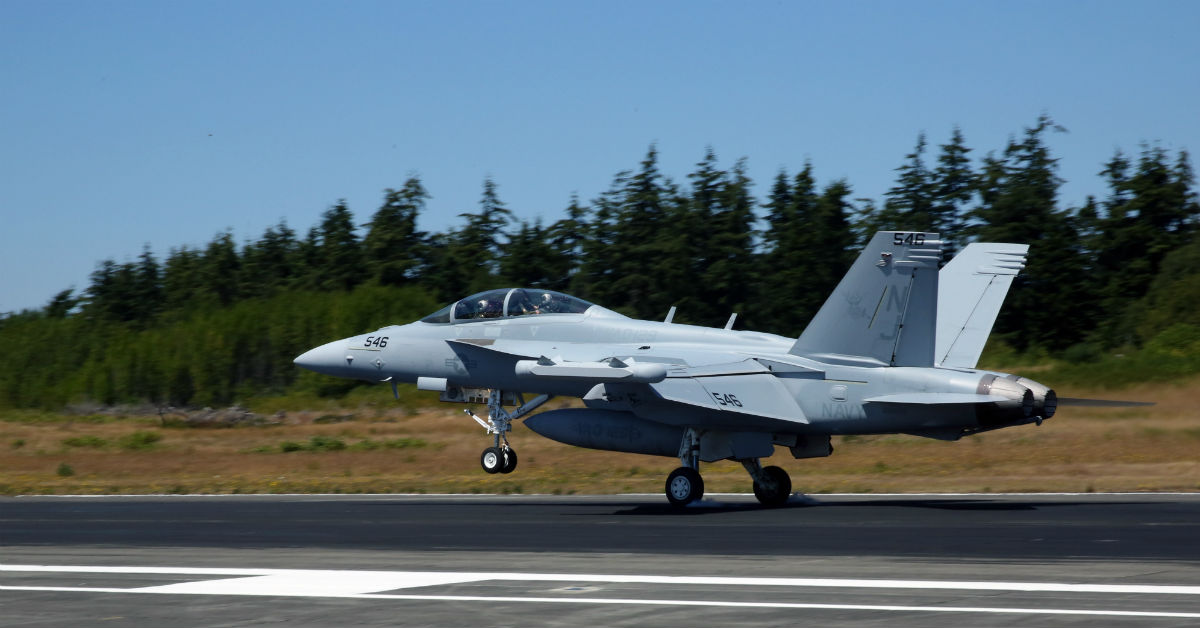
Seaman Recruit David L. Spearman, originally from North Carolina, joined the Arleigh Burke in April.
The Navy identified the sailor assigned to the guided-missile destroyer Arleigh Burke who died falling overboard into the Baltic Sea on Aug. 1. Seaman Recruit David L. Spearman, originally from North Carolina, joined the Arleigh Burke in April after wrapping up training at Surface Warfare Engineering School Command at Great Lakes, Illinois. “This bright, young man made an oversized positive impact on Arleigh Burke. My entire crew’s thoughts and prayers are with Seaman Recruit Spearman’s family and friends. We offer our most sincere condolences for their loss,” Cmdr. Pete Flynn, commanding officer of the Arleigh Burke, said in a statement. “Thank you to the Swedish and German navies, the U.S. Air Force, and the Sailors from Arleigh Burke for their extensive efforts to search for our shipmate,” Flynn said. No additional details were available. The destroyer is based out of Rota, Spain, and is part of the Navy’s Task Force 65, which supports regional allies and partners in U.S. 6th Fleet.

Theaters of War offers a new perspective on the military's relationship with Hollywood.
Editor’s note: Army Times senior reporter Davis Winkie authored his master’s thesis in 2019 on the early years of the DoD’s Hollywood liaison program, as well as a number of blog posts and articles. The director of this film contacted Winkie in 2020 to ask about a Marine Corps Times story he penned about a John Wayne film that was never made. Winkie shared some public domain archival documents with him but wasn’t involved in this film’s production. Movies often have warnings and mandatory disclosures during their previews — a film’s official rating from the Motion Picture Association, anti-piracy warnings and more. A group of academics and film industry professionals want to add a new disclosure: whether a movie or show received production support from the Defense Department, as more than 2,500 productions have since the military established a Hollywood liaison office in the late 1940s. The list is extensive, including both Top Gun films and a host of other blockbuster films. It’s the subject of a new documentary, Theaters of War, directed and narrated by University of Georgia communication studies professor Roger Stahl. The idea behind the DoD’s production support program is simple: Hollywood producers who want to make a movie or show portraying the military can get access to DoD gear, vehicles, personnel and more if they are willing to turn over a copy of their script for approval. Sometimes filmmakers make edits to their scripts or films to receive Pentagon support, which can exponentially lower filming costs. And some films that can’t get approval never get made. The documentary leans heavily on interviews with two avowedly anti-war journalists — Tom Secker and Matt Alford — who have obtained countless documents about the program over the years via the Freedom of Information Act, as well as other Hollywood figures like Oliver Stone. Secker and Alford’s crowning discovery is a database tracking production assistance requests, allowing for unprecedented systemic understanding of the program. Stahl describes a list of “showstoppers” that can keep a project from receiving military support, unless they’re handled with extreme care. These include friendly fire incidents, fragging of officers, American war crimes, military sexual assault, suicide and more. All the interviewees agree that this system amounts to a silent propaganda push that lets the military influence the way it’s depicted on screen. But is it really censorship or propaganda, and do Americans even care? Whether the Pentagon production support program amounts to censorship or propaganda depends on the beholder. I described the program’s early years as soft censorship in my thesis. That was mostly because, in the immediate aftermath of World War II and the Korean War, there weren’t private-sector options for filmmakers to obtain the equipment and vehicles they needed. While many think the military shouldn’t be forced to help unfavorable productions, the impact on that era’s war movies was real. Thus, the military’s support decision was often life-or-death for a project, and not even John Wayne was immune to the Marine Corps denying cooperation on a proposed film in 1954. “Giveaway Hill” never made it onto the silver screen because of the Corps’ offense with “the bloody carnage depicted in many areas of the script” and “the calling of fires on own troops by a Marine battalion commander,” among other issues. That time the Marine Corps killed a John Wayne movie Many cut out “objectionable” scenes to keep the Pentagon’s support flowing, effectively cleansing early Cold War-era war movies of darker topics, such as American war crimes, racism in the ranks and more. But in the decades since, projects with big enough budgets have been able to spend their way out of that bind. Theaters of War describes how one film, “Thirteen Days” from 2000, had to find fighters and air bases in the Philippines and borrow a destroyer from a museum to overcome the Pentagon’s limited willingness to support a movie about the 1962 Cuban Missile Crisis. Even if it’s not censorship — or propaganda — Stahl and Theaters of War just want you to decide for yourself. And that’s a start. Theaters of War is available for streaming on Vimeo for $4.99.

DFAC food strikes again.
Times look tough for the U.S. Army if a photo of the breakfast served at one of the dining facilities to a soldier with the 299th Brigade Support Battalion is any indication. “I guess 299BSB is broke as hell, and we still went to NTC,” wrote user u/willsugmar, who shared a picture of a meager biscuit, sad scrambled eggs, and a pathetic puddle of gravy. Many commenters likened the meal to prison food. “In prison or the DFAC?” asked user diopsideINcalcite. “Because DFAC can get rough when you’re fighting over French toast. Dudes get shanked routinely.” Some went so far with the joke as to discuss all the soldiers they’ve had to shank in order to get a decent meal. Complaints about the food at installation dining halls across the Defense Department are not new. And military officials don’t track the effectiveness of their ability to feed service members, according to a report by the Government Accountability Office. The Defense Department withholds money from troops’ pay to provide on-post meals, three times a day. The quality of those meals, however, have left a bad taste in service members’ mouths. “After many broken promises the system is still largely the same, with evidence showing that service members on meal cards are eating less than half the meals they are entitled to and for which they are charged,” Rep. Tim Ryan, D-Ohio, said in a statement to Military Times. Reviews of base dining facilities on Yelp also paint a dire picture. As for the dismal breakfast, “Convicts in Federal prison eat better then that,” wrote user Florida_man727.

New funding, strategy and focus puts CBRN back in the mix.
BALTIMORE — Over the next few years, troops working closely with chemical, biological, radiological and nuclear threats will get new suits, gloves and better detection devices. Those are small, though important, changes in how they can better combat a growing list of nasty threats that do not always involve bullets and missiles. But what will really change their work is a combined threat review, new strategy and increased funding to push CBRN to the forefront of defense thinking. This Guard exercise trains for hypersonic, chem/bio missile attacks on major U.S. cities The larger “pivot” and “transformation” that one senior defense official signaled at a conference devoted to the trade of defeating such threats, is a comprehensive posture review, increased funding across multiple years and a new way to integrate CBRN defense into everything troops do. With that new prioritization and funding, officials hope CBRN gear and strategy seep into the total force. Adding another layer of data mining and machine learning will help frontline CBRN better face currently unknown dangers that threaten to overwhelm defense, civilian and emergency response in ways that could exceed the COVID-19 pandemic. Assistant Secretary of Defense for Nuclear, Chemical and Biological Defense programs Deborah Rosenblum laid out the big picture in her remarks on July 28, the second day of the annual National Defense Industrial Association’s CBRN conference here in Baltimore, Maryland. “We are not going to figure it out as we go,” Rosenblum said. “We need a radical transformation.” Rosenblum characterized the growing chemical and biological threat as “vastly more difficult” and “rapidly changing.” Multiple speakers throughout the two-day event hammered away that the old days of “one bug, one drug” are gone. That is the methodology that existed for decades with threats such as smallpox or anthrax, both deadly viruses that do have existing vaccinations. While COVID-19 came from human-animal contact, current and future threats may be designed by adversaries such as Russia, China, North Korea, Iran or non-state actors specifically to confound existing identification tools. That masks who made it, what it is and how to treat it. And those are not casual references. The 2022 State Department Report on Adherence and Compliance for arms control, including chemical and bioweapons programs, made specific notes as to these adversaries. “The People’s Republic of China (PRC) continued to engage in activities with dual-use applications, which raise concerns regarding its compliance with Article I of the BWC,” the report read. The bulk of the State Department report regarding alleged weapons programs, specifically dual-use ones, includes estimated activity and fears of malign uses of biological and chemical technology due to incomplete, inaccurate, or sometimes misleading information. The United States also has its own biodefense and biological technology programs, which could themselves be switched to “dual-use.” The United States also pursued and created vast stores of chemical weapons and biological agents before committing to end offensive bioweapons programs and joining the Chemical Weapons Convention, along with most other states in the world. Russia maintained a robust biological and chemical weapons infrastructure while part of the Soviet Union. Despite public denial of such programs, Russian officials admitted in the early 1990s that its bioweapons program continued into the late days of the Cold War. Media reports have also pointed to multiple political assassinations that the Kremlin, at the behest of Russian President Vladmir Putin, conducted using radiological elements and the fourth-generation nerve agent Novichok. Then there’s North Korea, which has had a bioweapons capability since the 1960s, according to the State Department report. “North Korea probably has the capability to produce sufficient quantities of biological agents for military purposes upon leadership demand,” the report stated. However, outside experts, such as those with the Bulletin for Atomic Scientists, note that depictions of North Korean military capabilities want for tangible evidence. The closed-border country’s leadership could be touting strong bioweapons programs simply as a strategic bluff. “One must be prudent when discussing North Korea, and not jump to conclusions or ascribe a threatening meaning to any sliver of information that manages to emerge, particularly when it emerges in a time of crisis,” wrote Sonia Ben Ouagrham-Gormley, then an associate professor studying biodefense at George Mason University, in a 2017 article on the Bulletin. A 2020 report by the thinktank Stimson drew a similar conclusion. The Stimson report noted that the U.S. government has made these claims for years without a clear definition of a bioweapons program. “However, based on a definition by United Nations (UN) inspectors investigating Iraq’s BW activities, probably the most that can be said in the case of North Korea is that it may have or have had a BW program,” the Stimson report stated. Regardless, biological and chemical threats still present a challenge for the Pentagon. Secretary of Defense Lloyd Austin sent a memo in late 2021 calling for a Biodefense Posture Review both for naturally occurring and manufactured biological threats. That review kicked off in January and is expected to take about a year, according to Rosenblum, the assistant secretary of defense for nuclear, chemical and biological defense programs. Ian Watson, deputy assistant secretary of defense for chemical, biological defense, said in a separate panel in Baltimore that the posture review will “outline critical aspects of the threat.” The move will raise the profile of CBRN in the national defense strategy, concepts of operations and operation plans across the force, he added. “Early warning is critical,” Watson said. That is because the use of biological or chemical attacks could preclude the start of armed conflict to prepare the battlespace. But already, the Pentagon bumped up spending on chemical and biological defense with $300 million more in the currently proposed budget and a total of $1.2 billion additional funding over the next five years of budgeting. Major moves that Rosenblum is pushing include adding CBRN sensors on most existing tactical platforms, as well as future platforms, from manned to unmanned, troop carriers to individual drones. The Pentagon also needs to use advanced algorithms and technical solutions to do better satellite and thermal imaging that could spot and track the spread of chemical weapons releases. A variety of entities across the Defense Department are developing modern vaccines that can be used before exposure as a protective measure and afterward as a treatment. That same vaccine research is also solving the “one bug, one drug” problem by building vaccines that address a family of viruses or even attack the symptom, such as upper respiratory problems, which exist across several viruses. A major initiative comes down to the lowest level — the individual soldier, sailor, airman or Marine. And that is through a program that seeks to have detection capabilities on wearable devices. The Pentagon tried this before, with old chemical detection strips that often got contaminated by other debris. They also built a white-faced watch-like device to detect exposure called the DT236. The problem with that device was that it had to be sent to a lab for analysis. That meant a soldier in the field unsure if they had been exposed was waiting days or longer to find out. But the new wearables, such as commercially available smartwatches with certain sensors, could provide real time updates to chemical and bioweapons exposure. “With these efforts, every warfighter can be a chemical or biological sensor themselves,” Rosenblum said. And while all those efforts are necessary for new threats, a new strategy will drive better protection, she said. “We can have the best material in the world, but if culture and mindset are not integrated…it’s going to sit on the side,” Rosenblum added. Past practices did not always allow CBRN experts to know what they were dealing with, at what concentration and at what scale. That often meant pulling entire units out or cordoning off swaths of the battlespace. Those measures are great for adversaries because it reduces troops in the fight and restricts the battlefield. But, if leaders can take a more tailored approach to how they prepare for such attacks and react to them when they occur, they can be more effective on the battlefield, experts said.
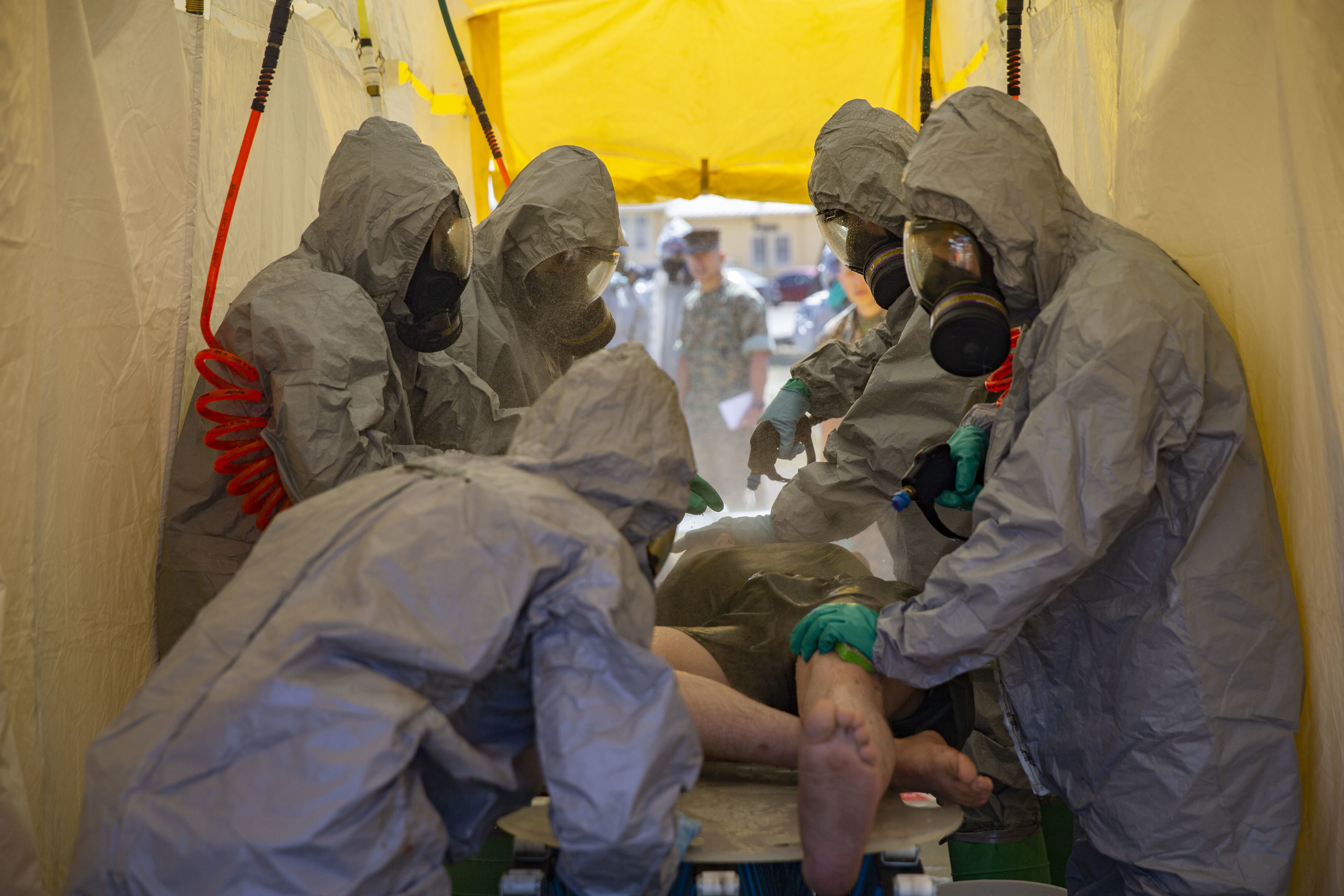

“This mishap was the result of a mechanical failure undetectable during normal flight operations."
Mechanical failure led to the crash of a T-45 Goshawk trainer aircraft in Texas last year, according to an investigation obtained by Navy Times. The aircraft, assigned to Training Air Wing 2 out of Naval Air Station Kingsville, Texas, was participating in a regularly scheduled training mission March 24, 2021 when the aircraft’s hydraulic system caution light appeared as the aircrew was practicing landing pattern procedures, roughly 45 minutes after takeoff. Although the crew sought to resolve the emergency, the aircraft still suffered an “abrupt and rapid right roll soon after a hydraulic system 1 (HYD1) failure,” the investigation said. The roll off happened so quickly and at such a low altitude that the aircrew had no other option but to eject. “This mishap was the result of a mechanical failure undetectable during normal flight operations, not due to pilot misconduct,” the investigation said. “No supervisory negligence or malpractice was causal to this mishap.” Navy training jets collide over Texas Mishap wreckage revealed the starboard aileron power control unit separated from its piston rod, ultimately causing the right-hand roll. Ailerons control the roll of the longitudinal axis, according to the Federal Aviation Administration. “Due to the design of the T-45C flight control and hydraulic systems, it was not possible for the mishap aircrew to discover a failed starboard aileron PCU piston prior to the HYD 1 pressure loss, nor was it possible for the aircrew to recover the aircraft to controlled flight once the ailerons fully deflected,” the investigation said. The Navy said the student and the instructor pilot occupying the aircraft safely ejected, without life-threatening injuries, near Navy Auxiliary Landing Field Orange Grove. The aircraft was completely destroyed in the Class A flight mishap, which involves damages of $2.5 million or more. According to the investigation, flight gear did not contribute to the mishap. The report also said it was “highly unlikely” that fatigue, medication, unauthorized substances or alcohol were factors. The investigation offered several recommendations, including that the type commander and Naval Aviation Training T-45C class desk should create a team examining the failure of the aileron power control unit. The investigation also said T-45C user activities should brief on the mishap, and that the Aviation Mishap Board should conduct an investigation into the loss of hydraulic system 1 pressure. Anne Owens, a spokesperson for the chief of Naval Air Training, told Navy Times all recommendations have been incorporated. The crash was one of at least four Class A mishaps involving T-45s last year, according to the Naval Safety Center.

We want to see more military movies "raptorized."
If there is one indisputable fact, it’s that dinosaurs are awesome. Anyone who disagrees is entitled to that opinion, but they are simply wrong. And while there are plenty of films that chronicle the scaly heroes of the Mesozoic Era, it also is fun to see movies and shows about dinosaurs living among humans. As a series, “Jurassic Park” has long had an affinity for the Cretaceous period’s favorite predator: the Velociraptor. But what if you substituted in Velociraptors for the leading men and women in your favorite military or war movies? One Twitter user, @ButWithRaptors, has done just that. These are our favorites. 1. “1917″ 1917 (2019) but with a Velociraptor pic.twitter.com/SIyHR8onkP — But With Raptors (@ButWithRaptors) July 29, 2022 2. “Inglorious Basterds” Inglourious Basterds (2009) but with Velociraptors pic.twitter.com/bfedCDmE4d — But With Raptors (@ButWithRaptors) April 23, 2022 3. “A Few Good Men” he wants the truth pic.twitter.com/YLrv2SPl84 — But With Raptors (@ButWithRaptors) June 18, 2022 4. “Top Gun: Maverick” Top Gun: Maverick (2022) but with a Velociraptor pic.twitter.com/hsS7CviLIm — But With Raptors (@ButWithRaptors) May 23, 2022 5. “Air Force One” Air Force One (1997) but with a Velociraptor pic.twitter.com/7yokAqlFqW — But With Raptors (@ButWithRaptors) April 25, 2022 Personally, I’d like to see full cuts of all these movies, but if I have to, I’ll continue to settle for the GIFs and shorts. The software used to create these hilarious clips is made by Maxon, which helps designers with visual effects. There is one piece of it called “Universe Raptorize,” which specifically turns “Tom Cruise in any footage into Velociraptor Cruise in seconds.”

The U.S. is closer to conflict in the Pacific than it is to peace, the head of U.S. 3rd Fleet says, and the command structure must adjust to reflect that.
JOINT BASE PEARL HARBOR HICKAM, Hawaii — The U.S. is closer to conflict in the Pacific than it is to peace, the head of U.S. 3rd Fleet said, and the command structure must change to reflect that. Vice Adm. Michael Boyle has called for a centralized command-and-control structure — a standing maritime force similar to those elsewhere around the globe — that could rapidly respond to a crisis in the Indo-Pacific region. Speaking to Defense News at the Rim of the Pacific exercise, which runs June 29-Aug. 4, Boyle said the training event helps tighten the coalition of partners in the region and align their tactics. But he noted more must be done to adjust to this new posture, including understanding when each country’s military is authorized to join an operation by the proposed maritime force; which nations would join a humanitarian assistance or disaster relief mission; and which nations would join in a fight against China or North Korea. “We historically in this [area of responsibility] have thought about war as an esoteric adventure out somewhere in the future, not something that’s happening every day,” Boyle added. But a conflict could reasonably arise, “and we have to be ready to go.” That means having the joint force — including space and cyber assets — as well as partners and allies aligned so that, at the first sign of an adversary preparing an attack, the coalition could quickly intervene and pose dilemmas to the enemy. Boyle believes China will continue its gray zone activities but won’t escalate to full conflict until it’s confident it can win. A standing command structure would “look at what China, Russia and North Korea do, and then we posture the force to induce dilemmas into their thinking. We ultimately want them to think: ‘Today is not the day to go against this joint, combined force.’ ” Boyle pointed to a couple other standing groups as inspiration for the proposed Pacific force. In the Middle East, the Combined Maritime Forces naval partnership has 34 members that support three task groups, who in turn cover 3.2 million square miles of international waters. The group is led by the U.S. Navy three-star admiral who leads U.S. 5th Fleet and U.S. Naval Forces Central Command, and the deputy is a British Royal Navy commodore. In the Pacific, Boyle pointed to the Pacific Security Maritime Exchange, a nine-nation information-sharing group dedicated to stopping North Korea from violating United Nations sanctions. He also cited the Indo-Pacific Maritime Coordination Center, one of three fusion centers in which that U.S. Indo-Pacific Command has invested in order to share data for identifying at-sea threats. “We have pockets of excellence; I think we need a larger, centralized clearinghouse where you can plug into,” he said. Boyle took command of 3rd Fleet in mid-June after serving as the director of maritime operations at U.S. Pacific Fleet. His past assignments include commanding an air wing based in Japan, leading a carrier strike group that deployed to the Pacific, commanding naval forces in South Korea, and serving as the executive assistant to two previous Pacific Fleet commanders. Given his extensive experience in the Pacific, Boyle acknowledged he has his sights set a bit beyond the typical purview of a 3rd Fleet commander, which includes preparing ready forces to deploy and coordinating defense support to civil activities. If a conflict broke out, “as 3rd Fleet, I’m no different than 7th Fleet: I’ll be forward as a maneuver element of the fight.” While 3rd Fleet operates along the American West Coast and around Hawaii, 7th Fleet is located on the other side of the international dateline. Where 3rd Fleet can differentiate himself from 7th Fleet is the former’s ability to pull in partners from Central and South America, several of whom are participating in RIMPAC right now, he said. Boyle said he can’t dispatch U.S. Navy ships to those regions, which fall under U.S. 4th Fleet, for local exercises, such as UNITAS. But he can help couch them in the context of a Pacific fight and advocate for U.S. participation, and he hopes that setting up a formal command-and-control structure in the Pacific could serve to tighten the relationship with countries like Chile, Mexico and Peru, who have ships and ground forces at RIMPAC this year. As 3rd Fleet commander, Boyle also leads the RIMPAC exercise and the entire combined task force during the event. He wants this year’s annual drill to “force commanders to think a little bit more.” They may not know what exactly the threat is and how the exercise scenario will unfold, but he wants them to have a solid understanding of what capabilities exist within partner nations and who is authorized to participate as the conflict scales up; this way, he explained, they can begin to think through various options as scenarios progress. “That’s not the goal of RIMPAC overall, but I’m trying to set the foundation so that, as we move forward, future RIMPACs are an opportunity to rehearse centralized command and control of a combined force,” he said. “I can’t help but continue the work that I started in my previous job,” he added. “This is not just ships driving together — it’s understanding the command-and-control structure they’re going to have plug into.”
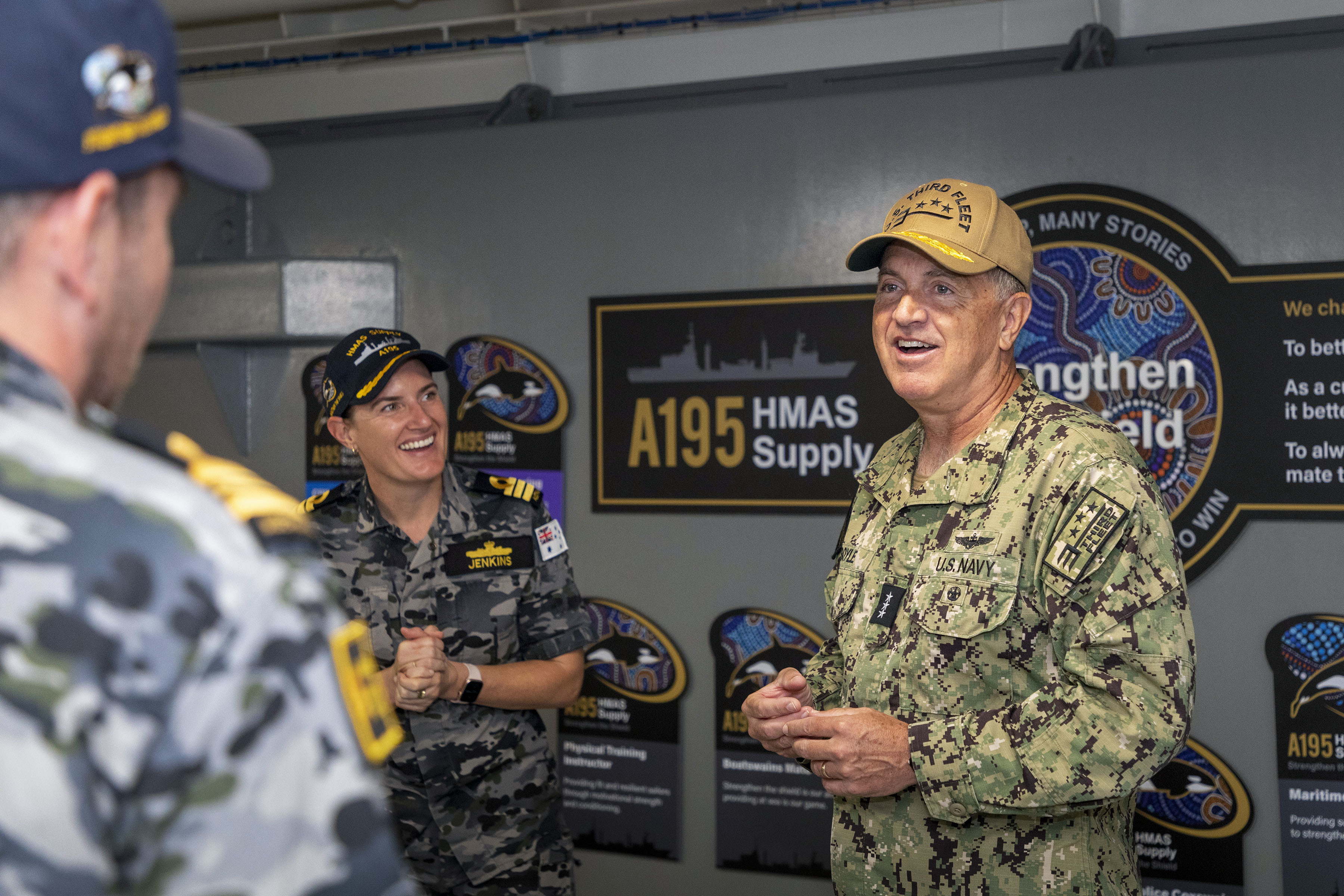

Watch "Purple Hearts" on Netflix.
WARNING: This review contains spoilers for Netflix’s “Purple Hearts.” It’s a love story as old as time. Marine meets girl, girl needs healthcare, Marine needs BAH to pay off an old drug dealer. So what do they do? Get married after three brief conversations the day before he ships off to Iraq and split the money. That is the premise of Netflix’s “Purple Hearts,” which stars Sofia Carson as Cassie Salazar and Nicholas Galitzine as Luke Morrow. Cassie is a struggling singer working in a bar that sometimes lets her band perform one song every Friday. She has Type I Diabetes, but her art doesn’t afford her health insurance. Luke, on the other hand, is an addict in recovery. He joined the Marines to get a fresh start and earn his dad’s respect, but he owes his former dealer a hefty sum of money. She first propositions a lifelong friend-turned-Marine to engage in the fraudulent marriage, but he turns her down because he already has a girlfriend of his own. Enter his bunkmate, Luke. And while the marriage is fake, the consummation that takes place at the base hotel after their courthouse wedding certainly isn’t... Despite essentially being strangers, the two Skype often so Uncle Sam doesn’t catch onto the sham marriage. But after a few conversations, Luke becomes Cassie’s muse, and she pens a song for the deployed men called “Come Back Home.” Unfortunately, Luke does indeed make his way home with a serious IED injury, turning their fake marriage into one where the pair must now care for each other ... in sickness and in health. As you can imagine, eventually the Marine Corps finds out about the sham, Luke loses everything, and he has to serve out a prison sentence. On the other hand, Cassie’s dreams all come true — her band takes off and gets to open for Florence + the Machine. Everything falls into place for her, except for the minor inconvenience of having fallen in love with her fake husband. The movie is based on a novel by Tess Wakefield, and is something of a soap opera-esque take on a military marriage entered into for the benefits. The best way to describe the movie itself is wounded in action — it tries, but it’s just not quite at 100%. It is exactly as corny as you’d expect, but I couldn’t look away. The storyline is thin, and the military premise is cliché, but, frankly, the chemistry between Galitzine and Carson is off the charts. Plus, once Luke finishes his stint in jail, he and Cassie live happily ever after — complete with a closing montage beach scene that looks like a Tommy Bahama ad for white linen apparel. Watch Purple Hearts on Netflix.

No sailors were injured in the Class C mishap, officials said.
An electrical fire broke out aboard the littoral combat ship Milwaukee while it was undergoing maintenance at Naval Station Mayport, Florida, Friday afternoon. Thirteen people who suffered smoke inhalation were treated at the scene and released, and officials reported no other injuries. The fire was called away at 1:41 p.m. “Ship’s crew and Jacksonville Fire and Rescue have extinguished the fire and are desmoking the affected spaces,” the Navy said in a statement early Friday evening. “All Navy and contractor personnel are accounted for and safe. The Navy will investigate the cause of the fire and determine the extent of the damage.” A boom has been placed around this ship as a precautionary measure, officials said. Correction: an earlier version of this story misstated the nomenclature involving the ship fire. The Milwaukee suffered a Class C electrical fire.





























